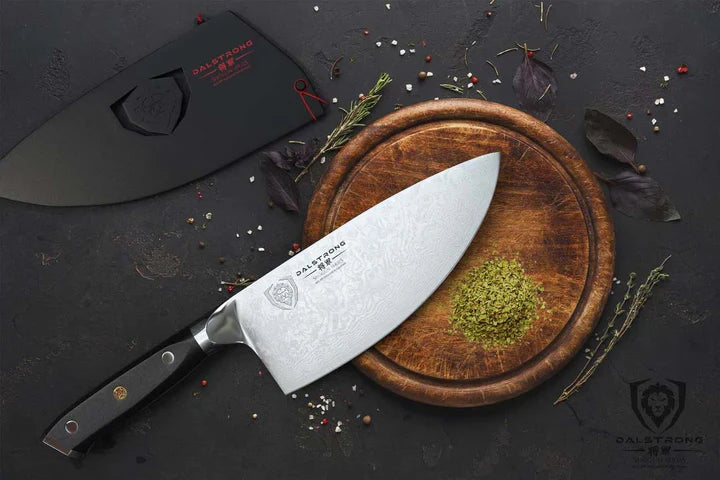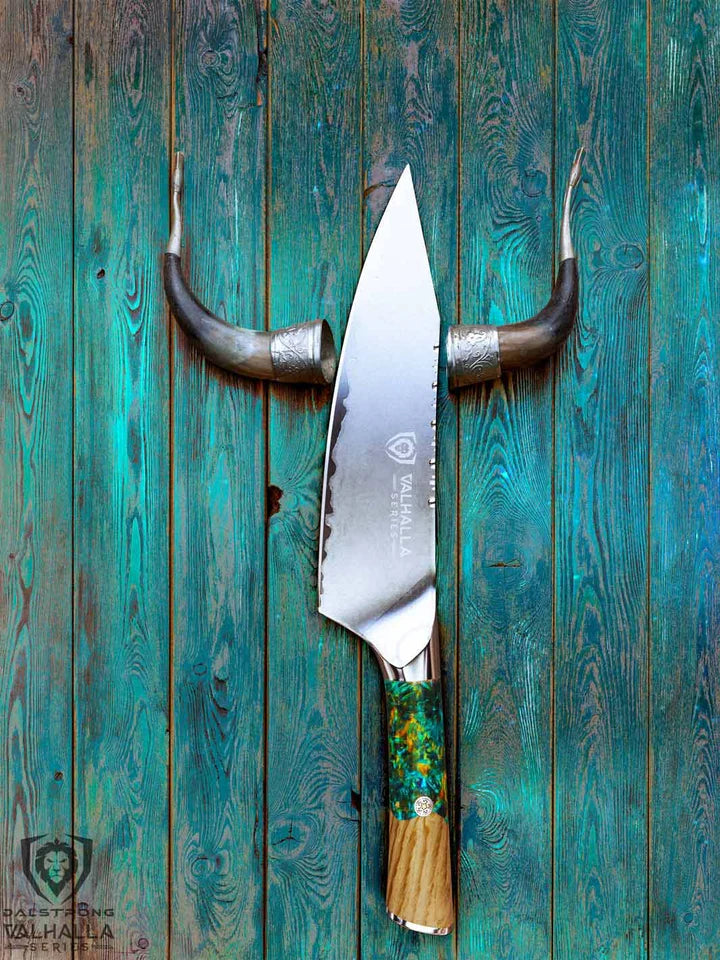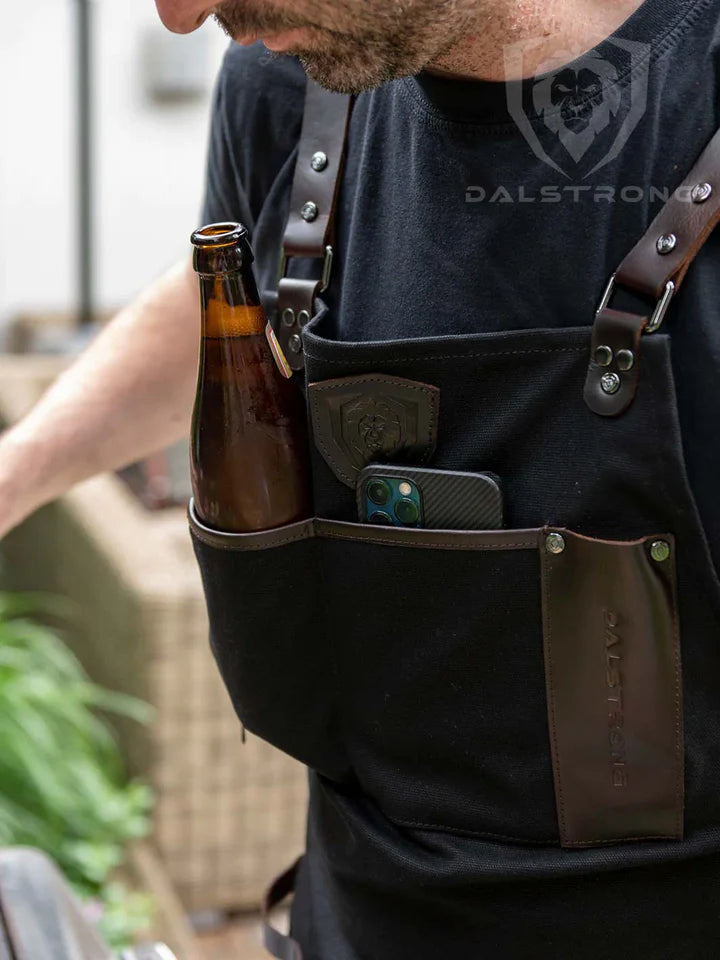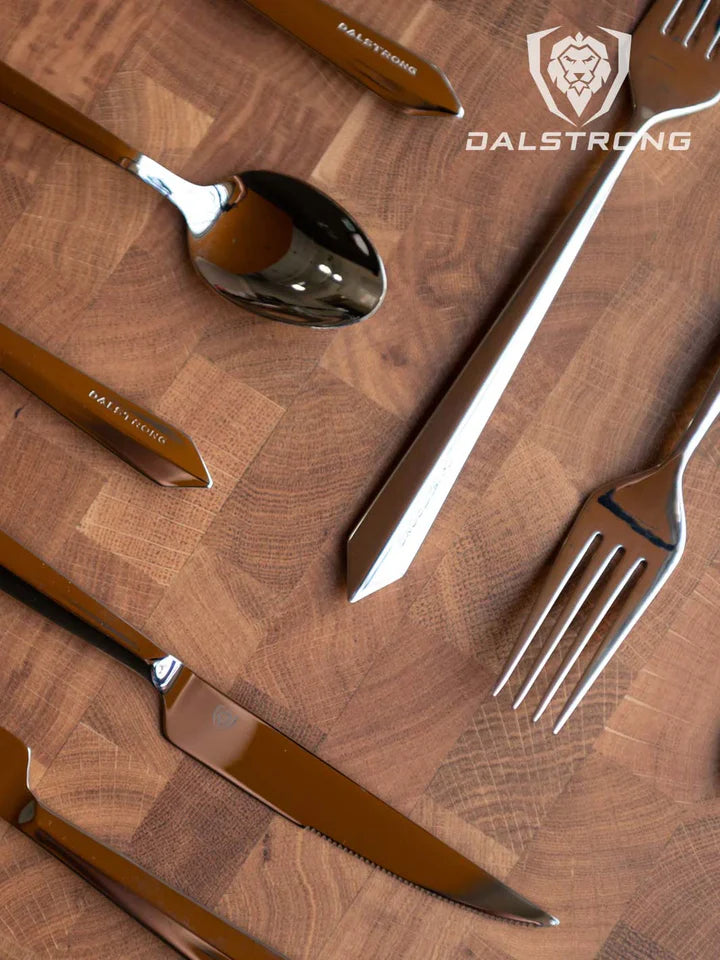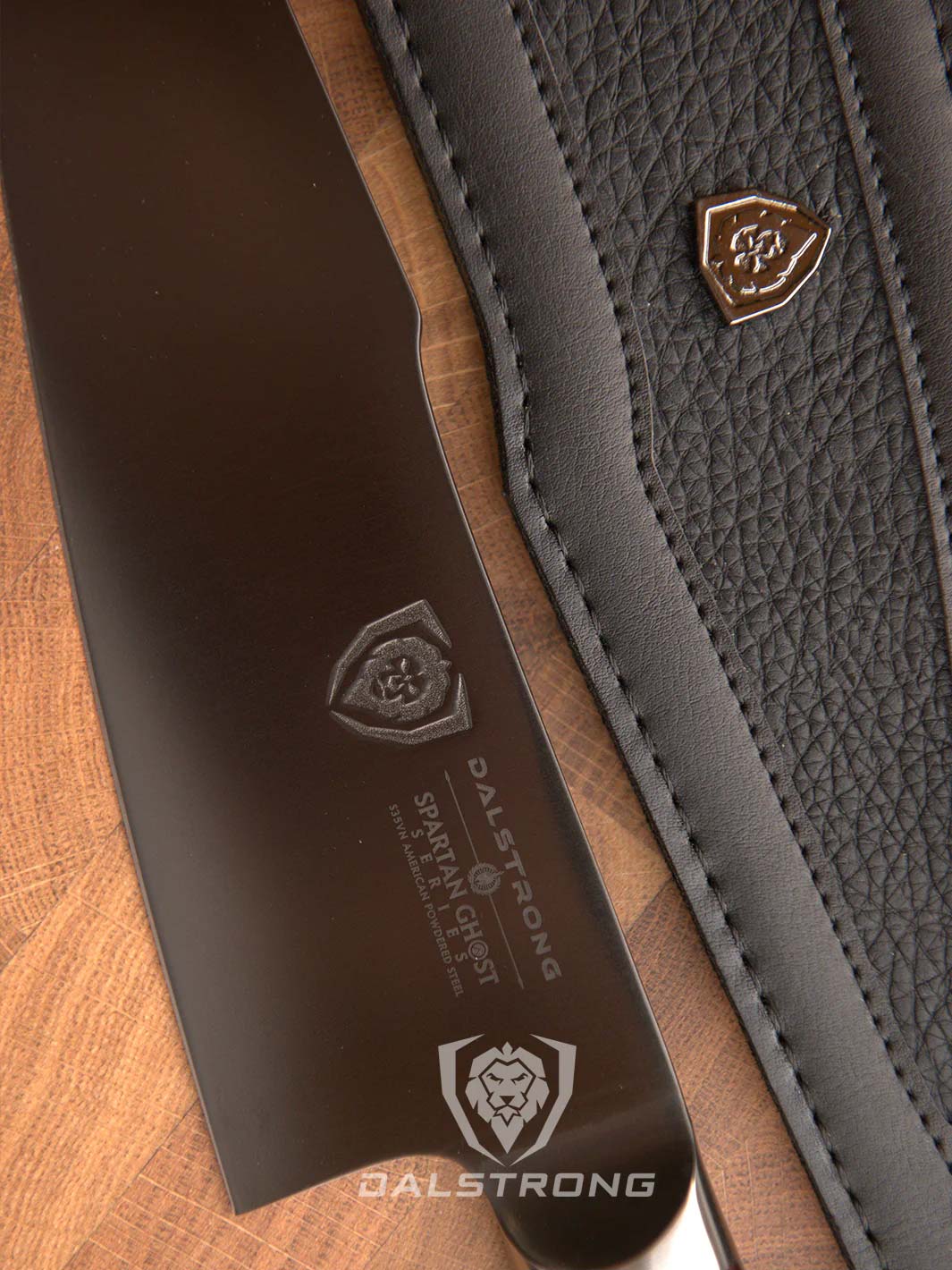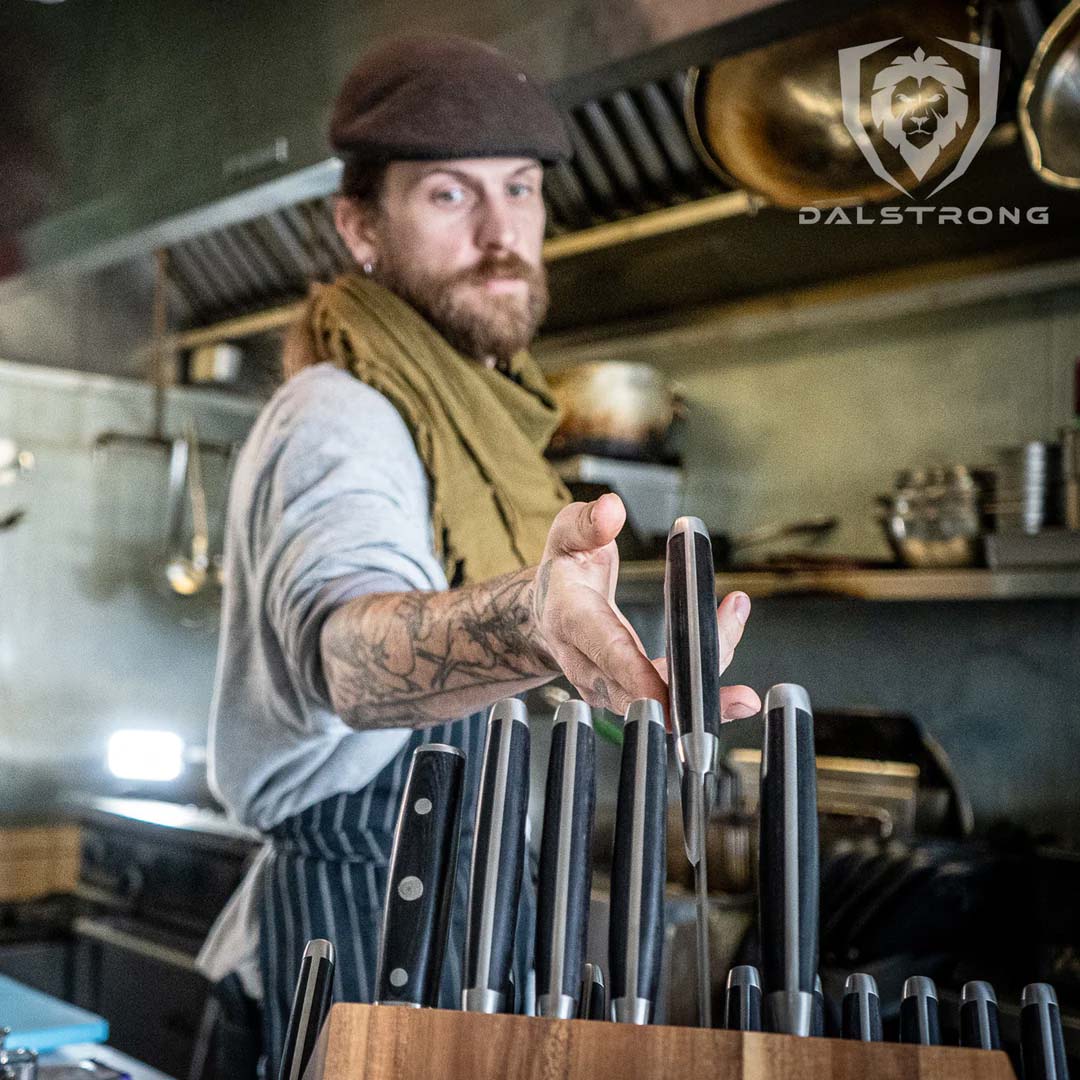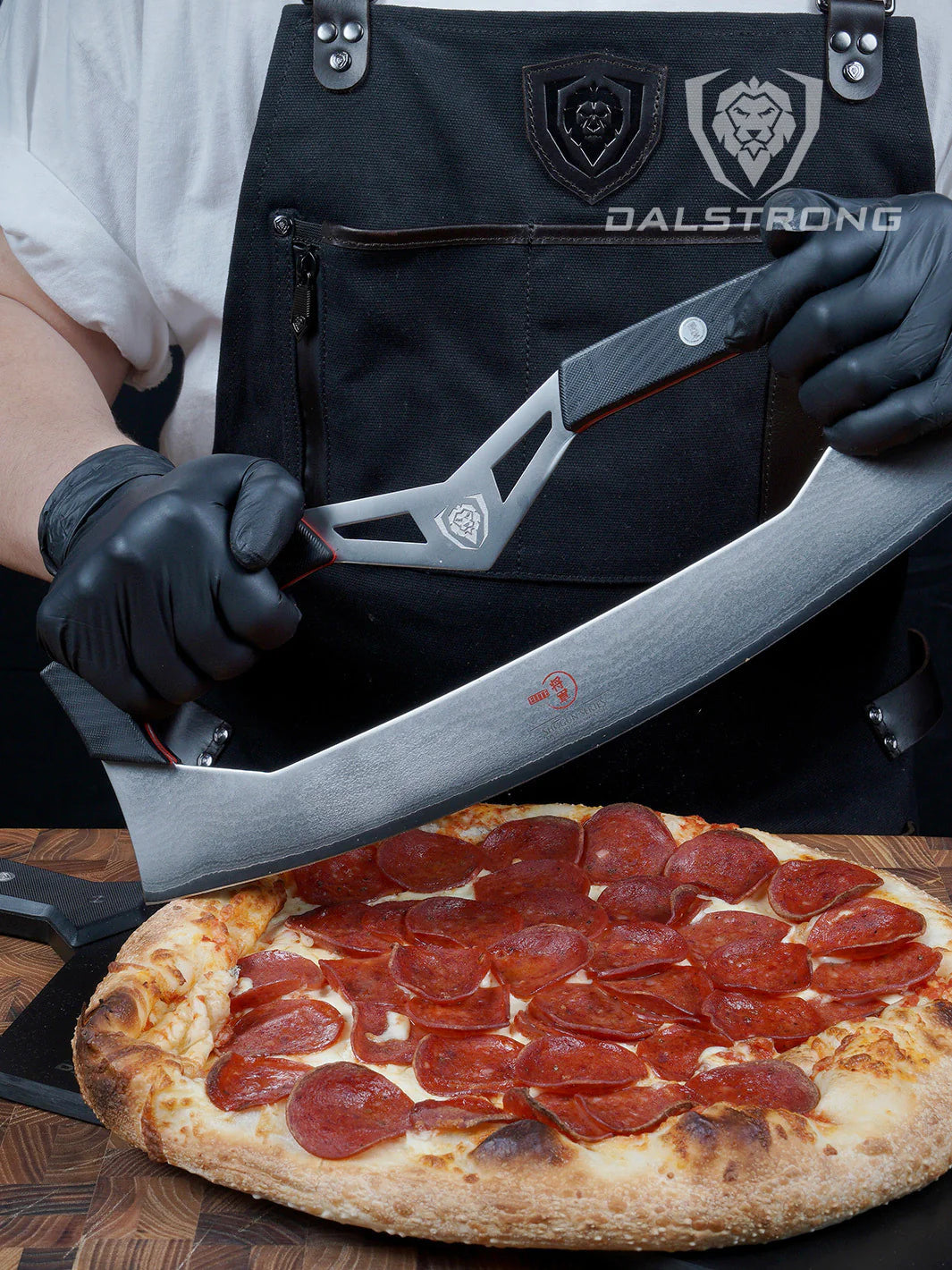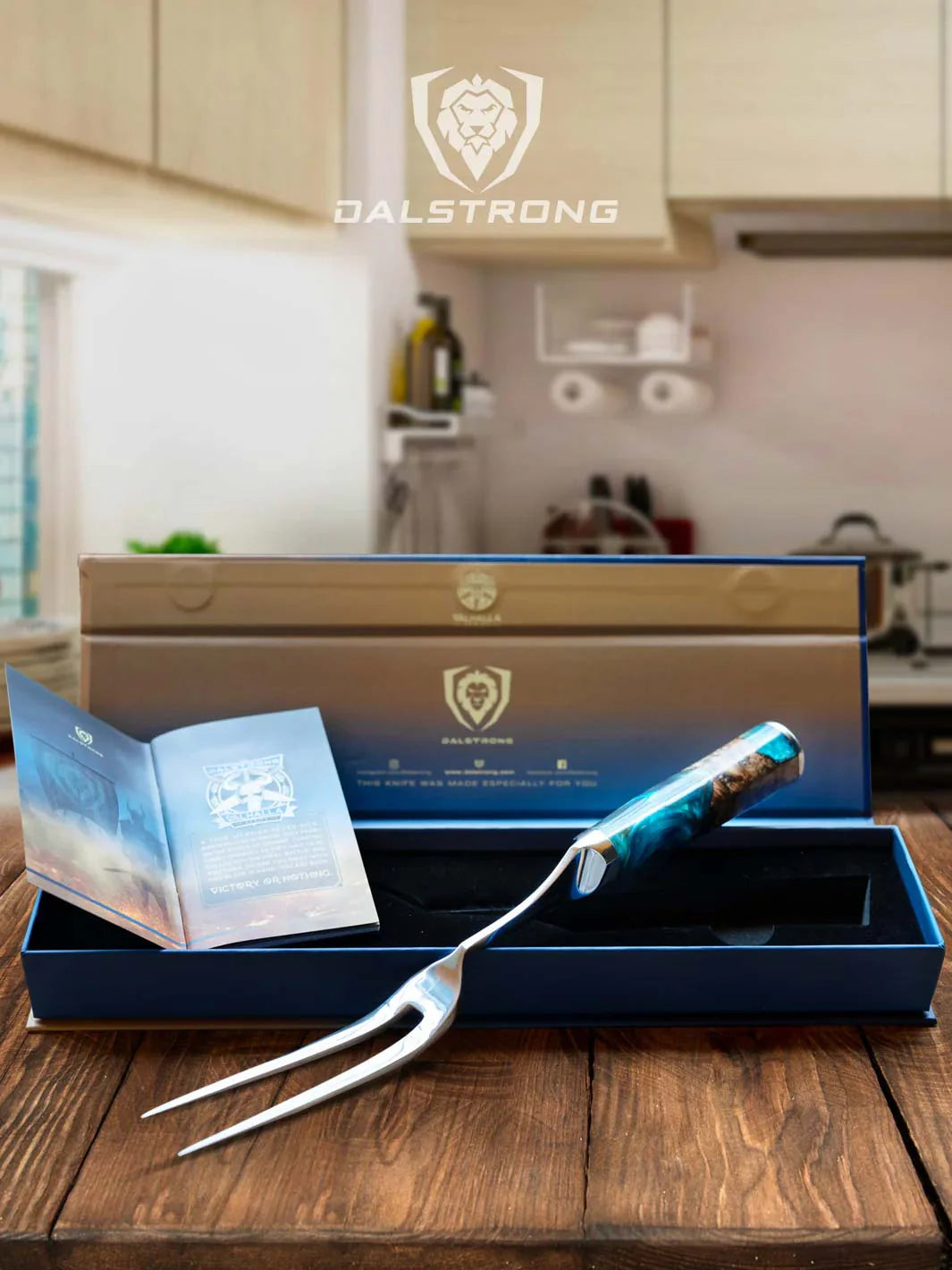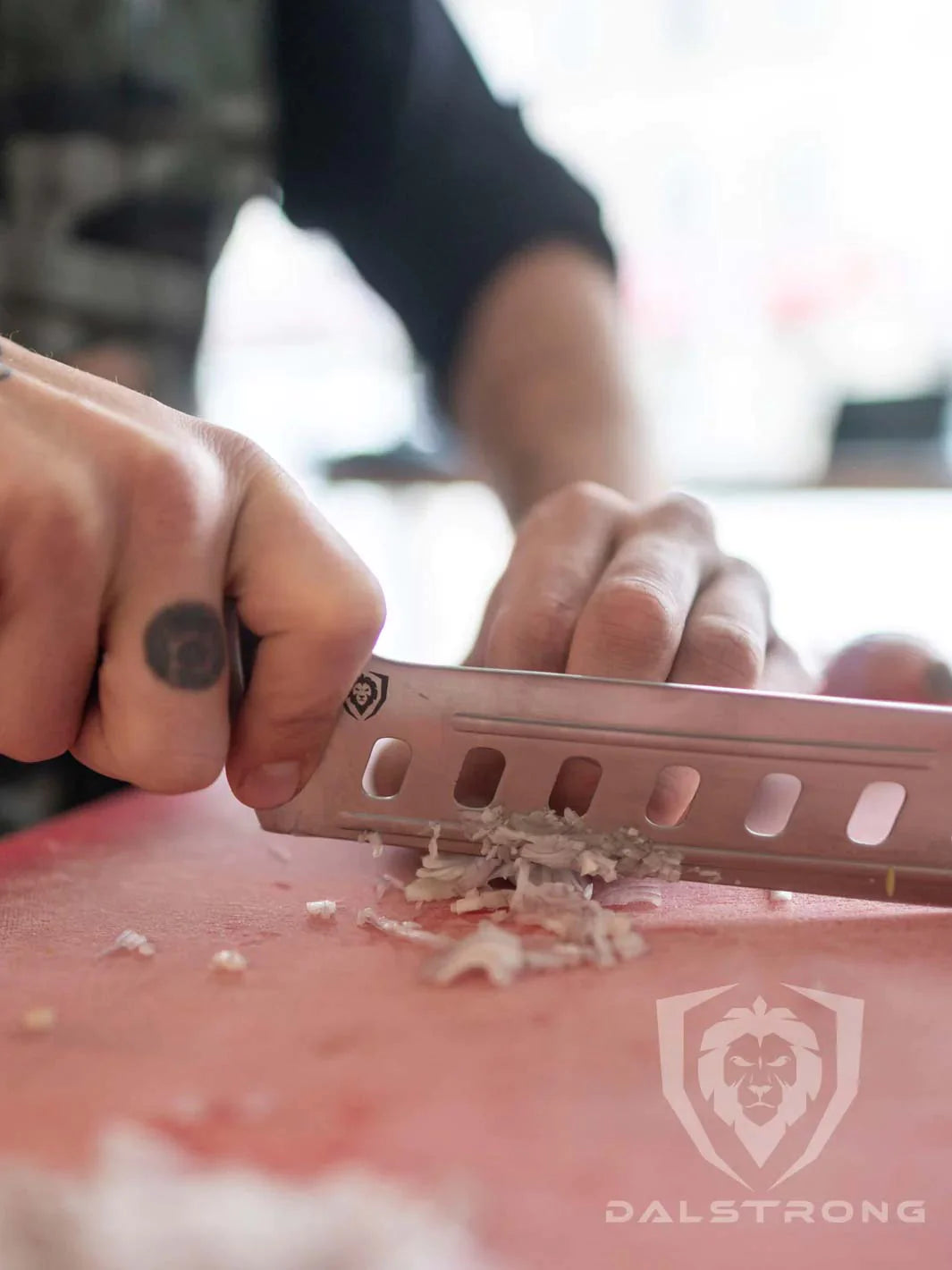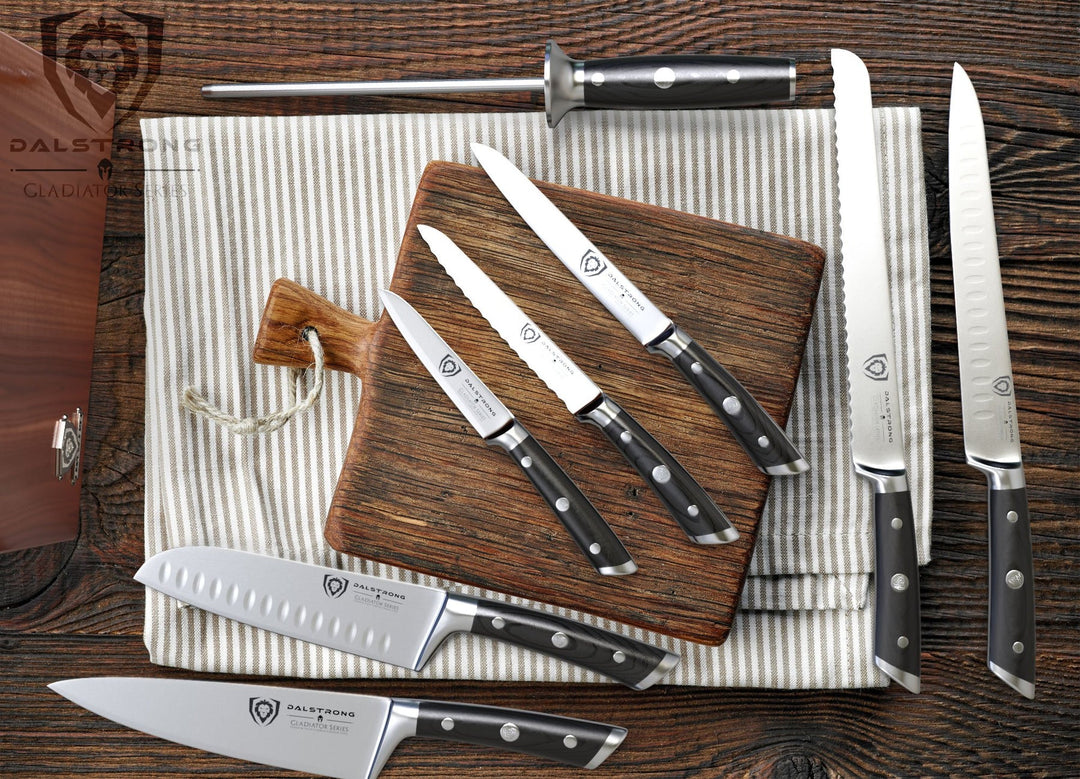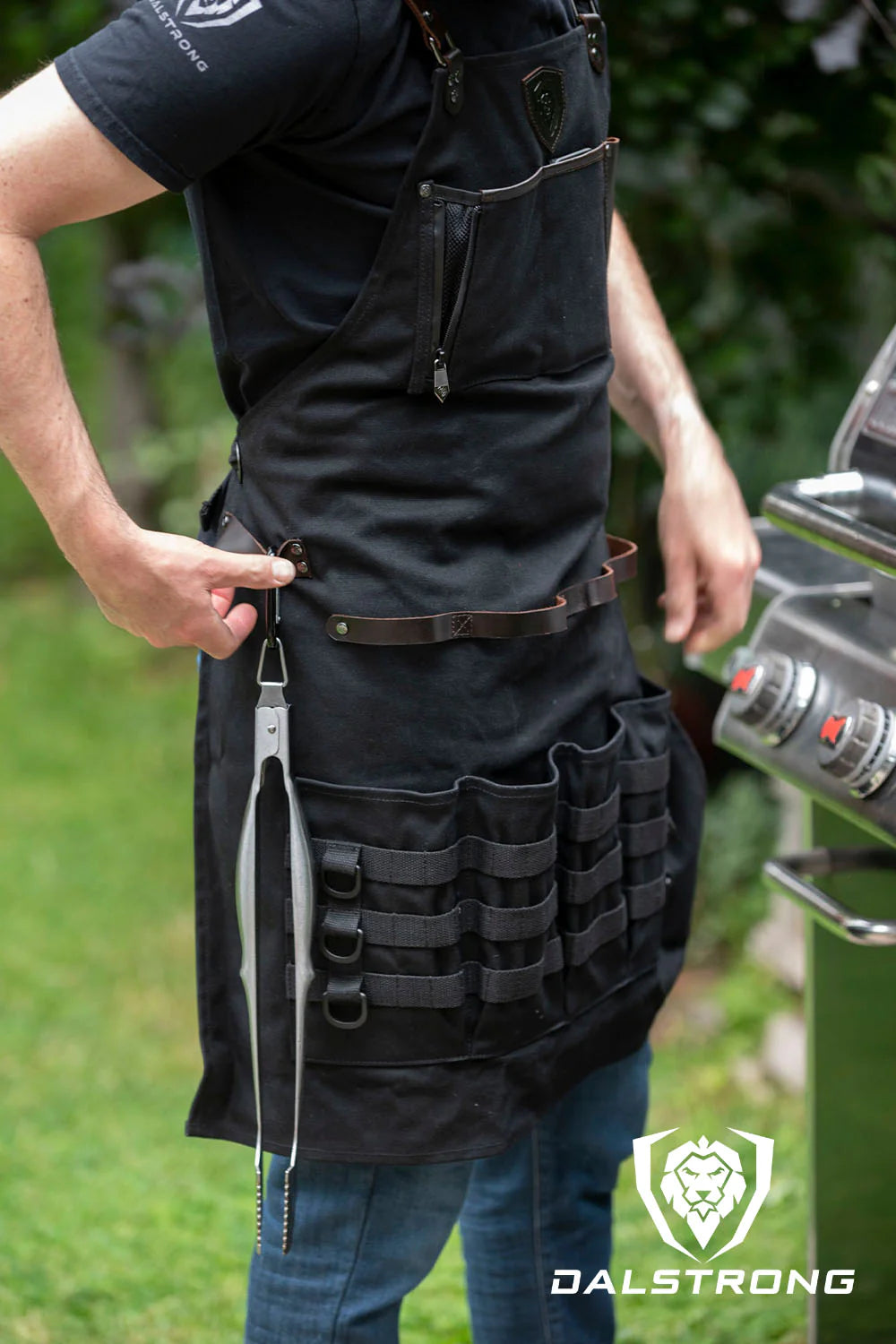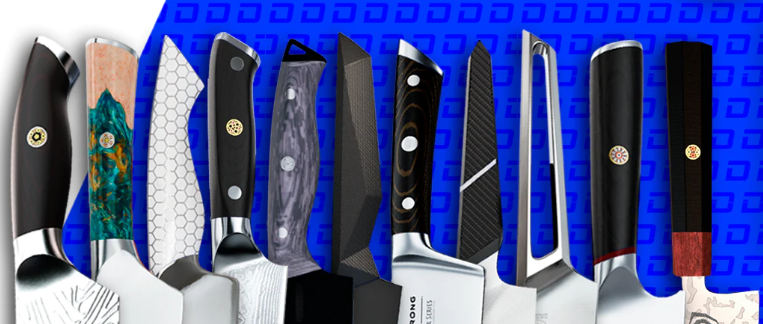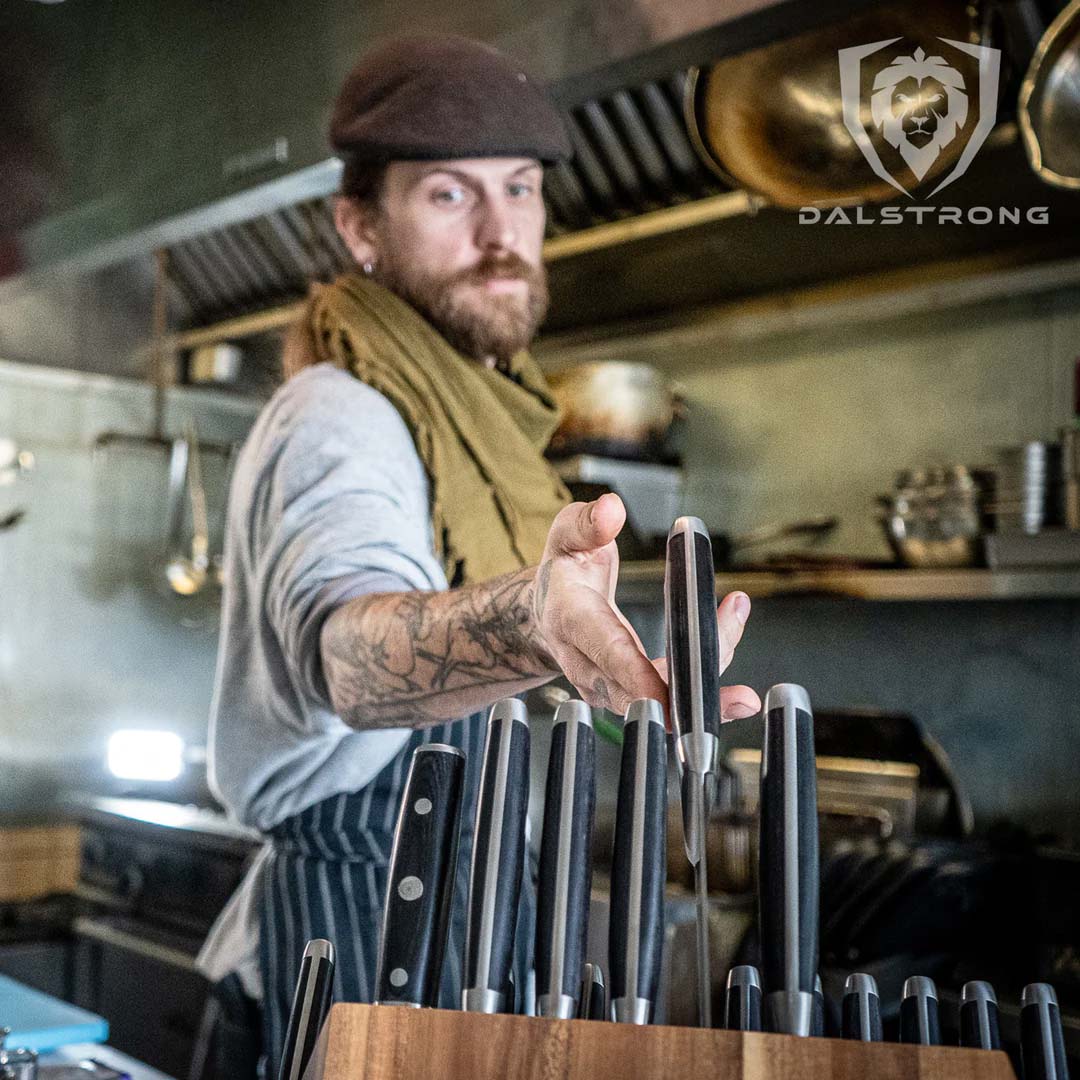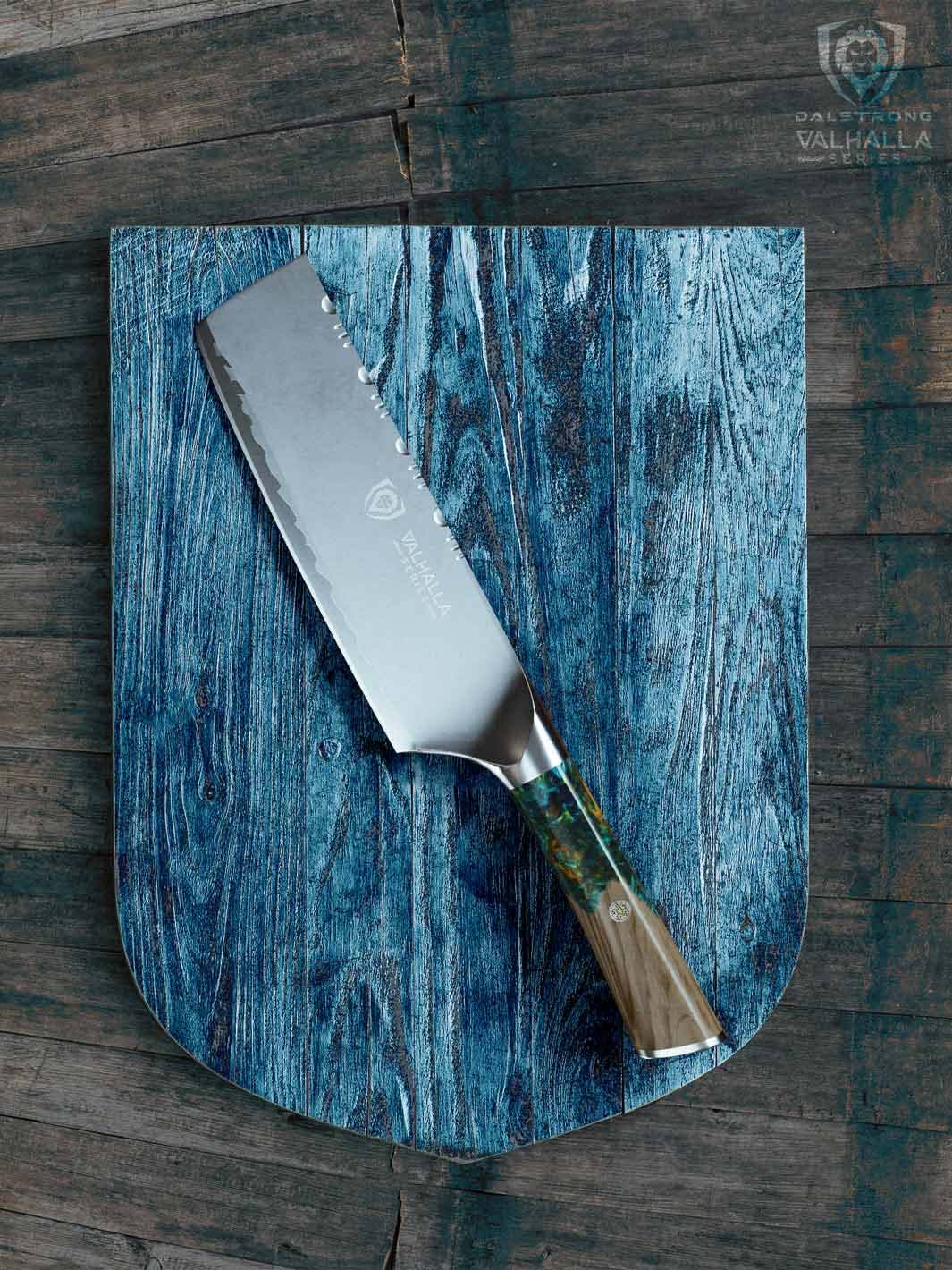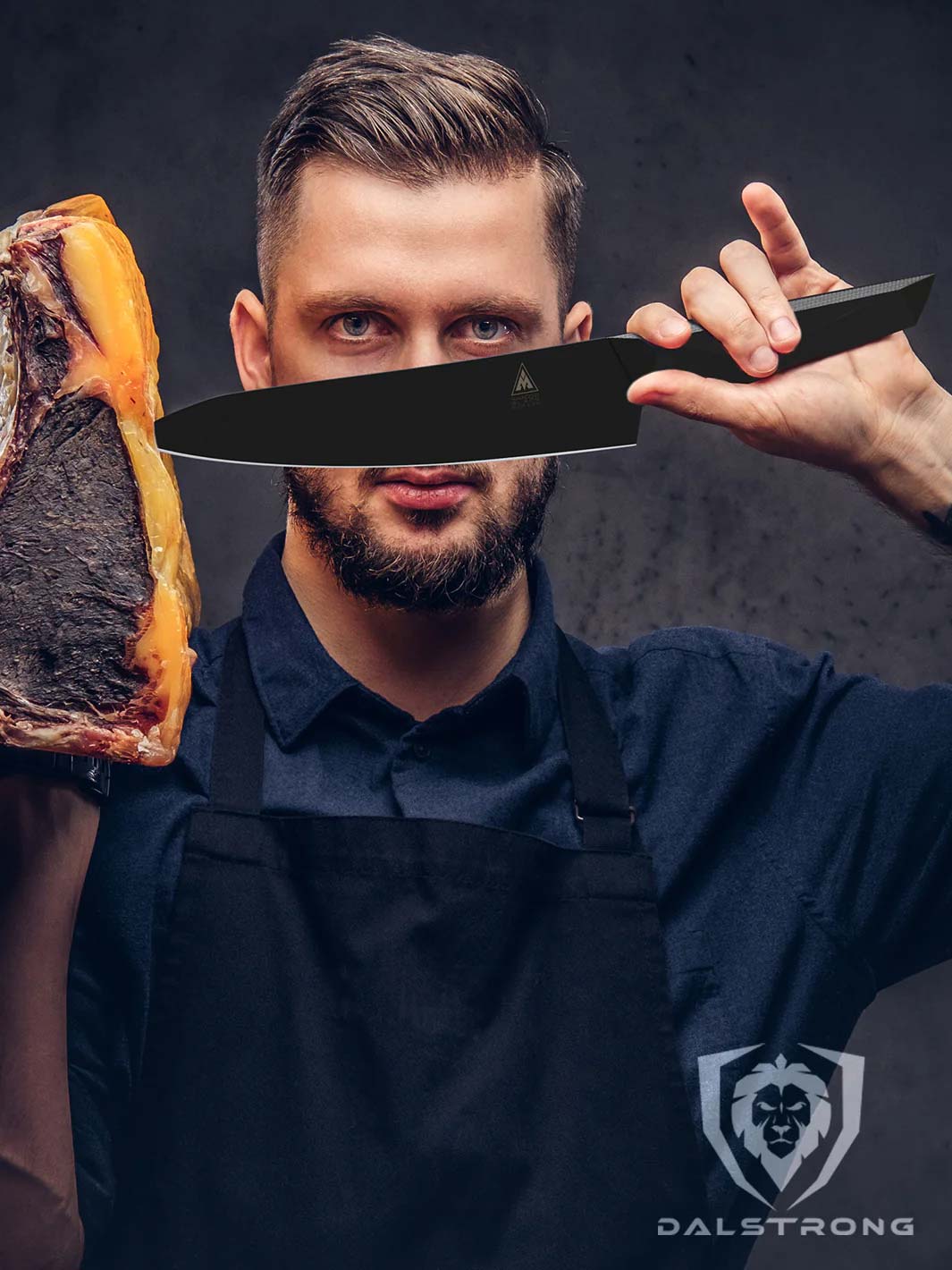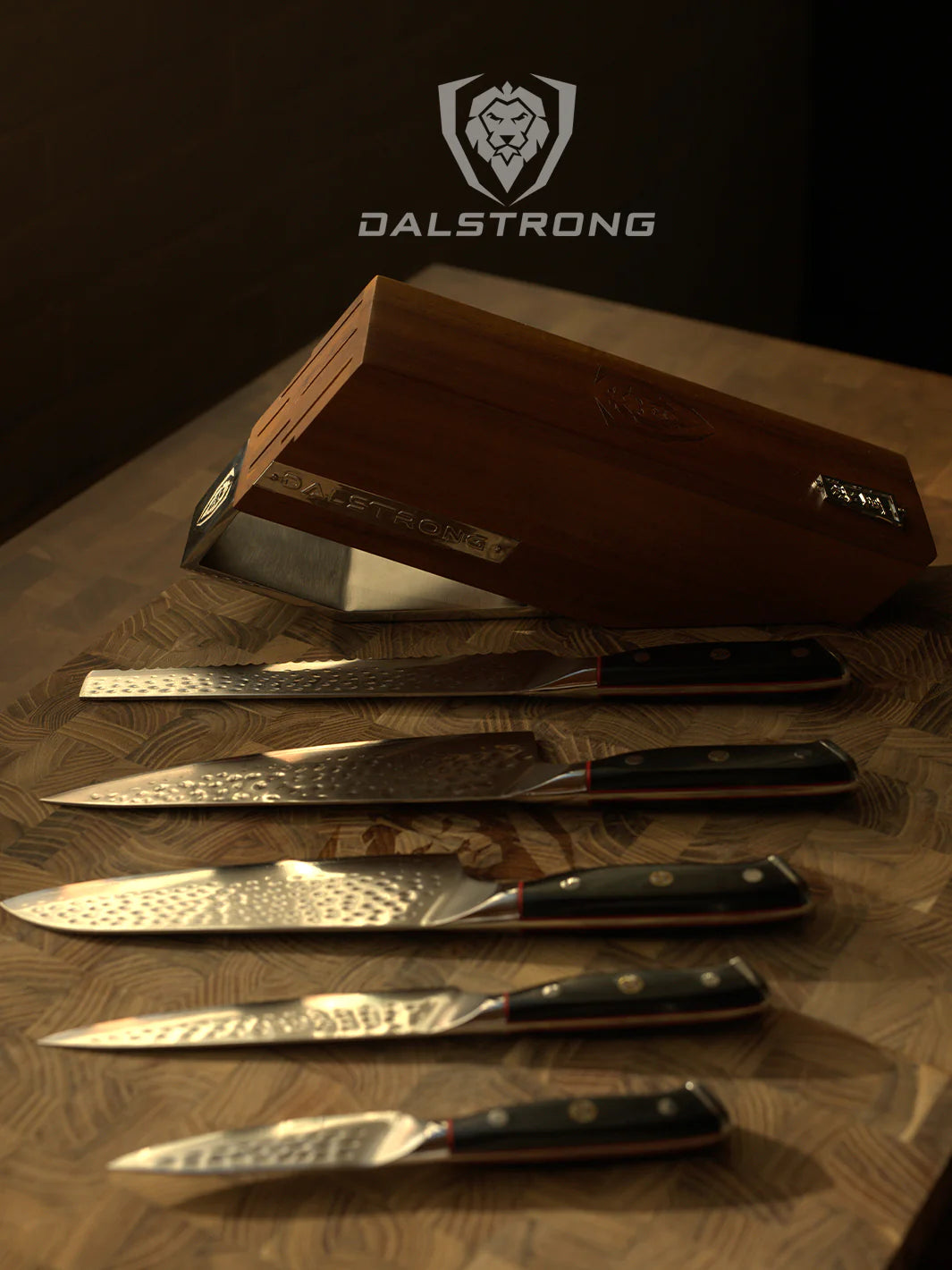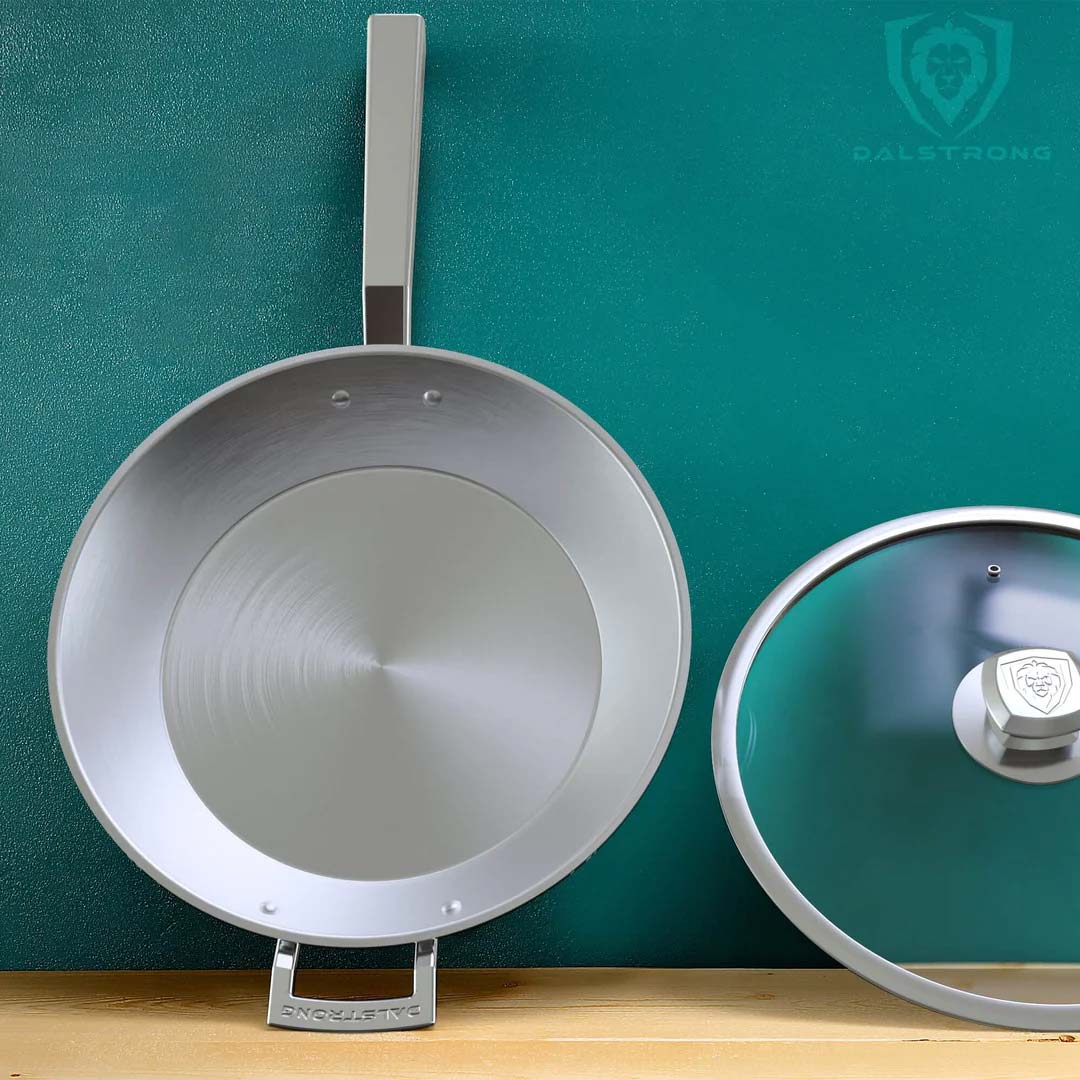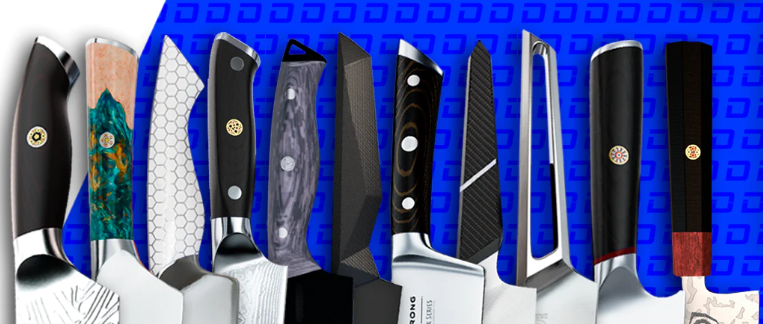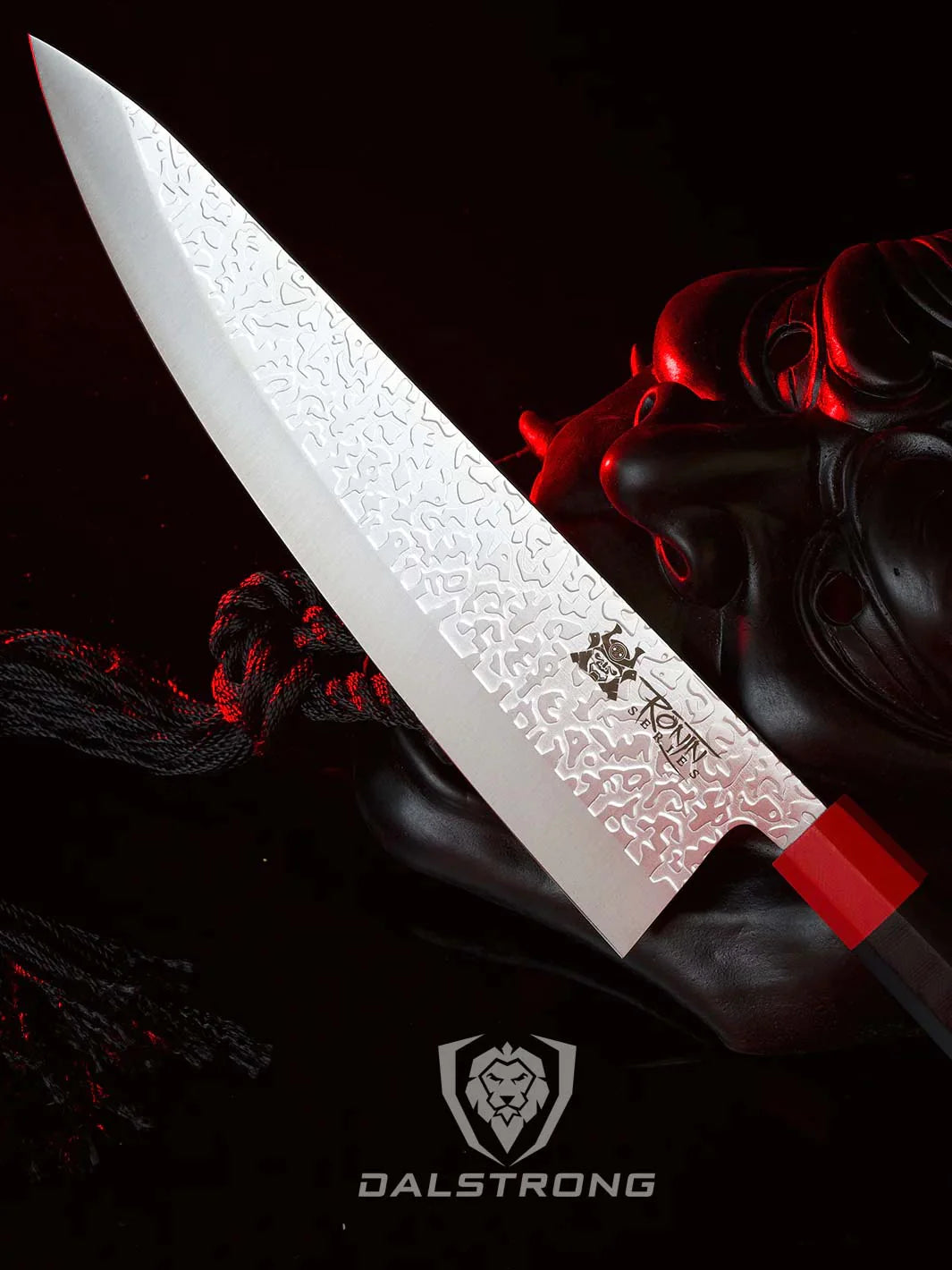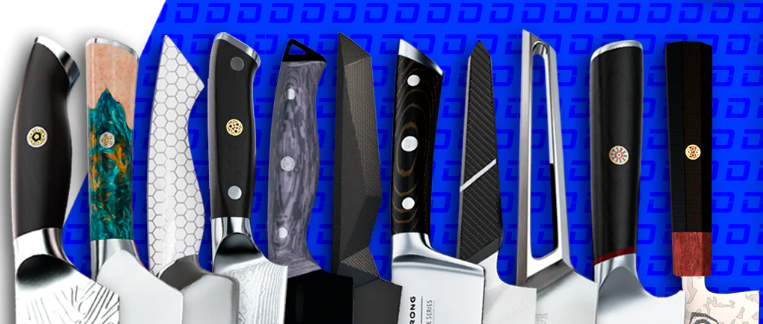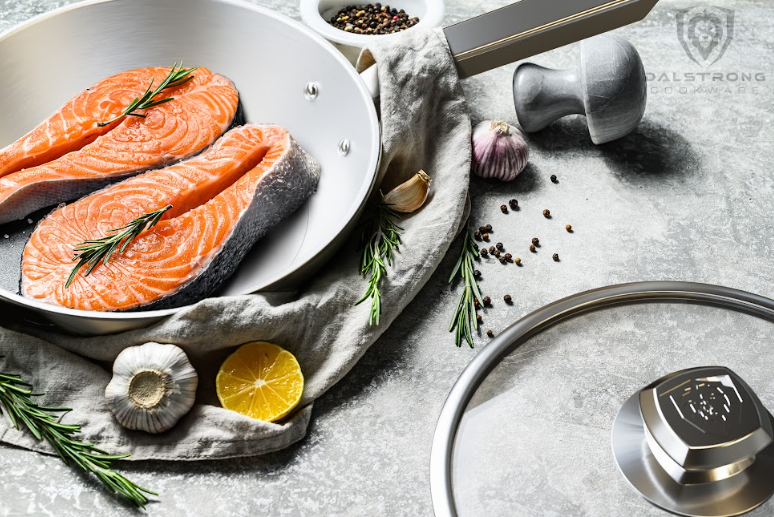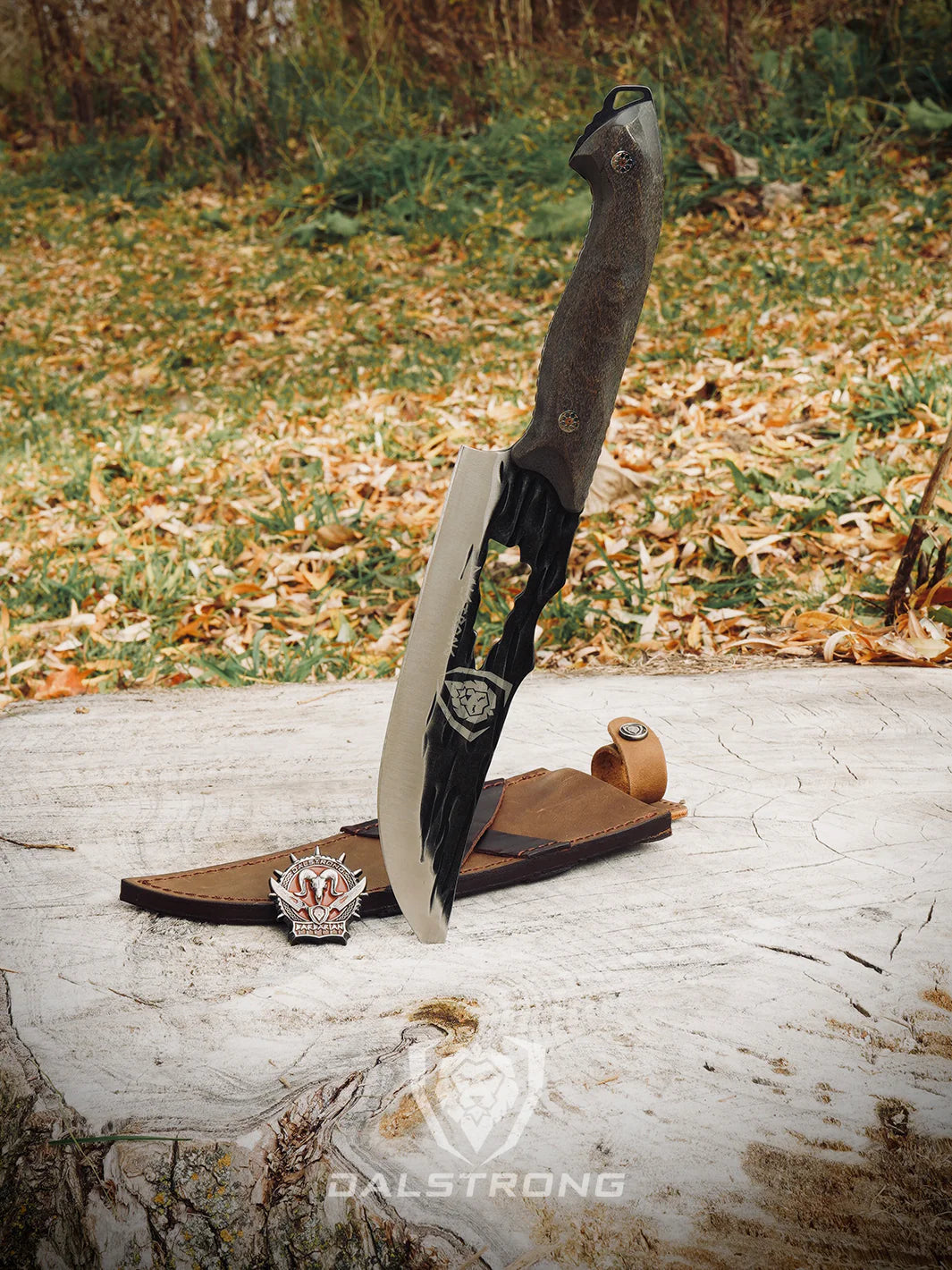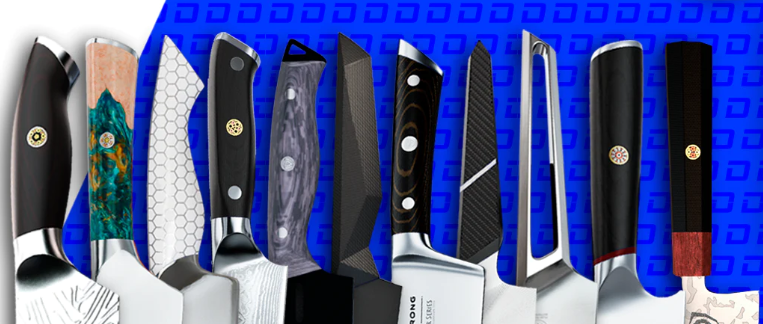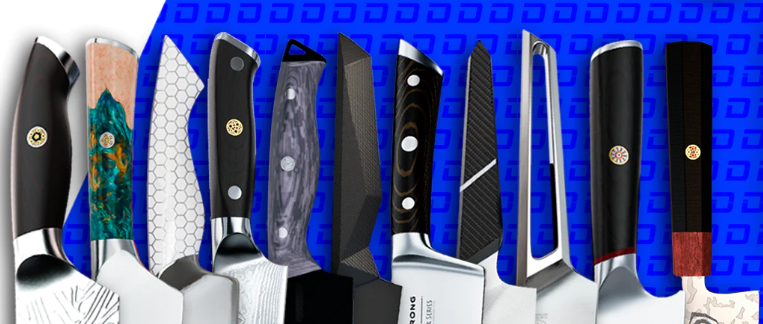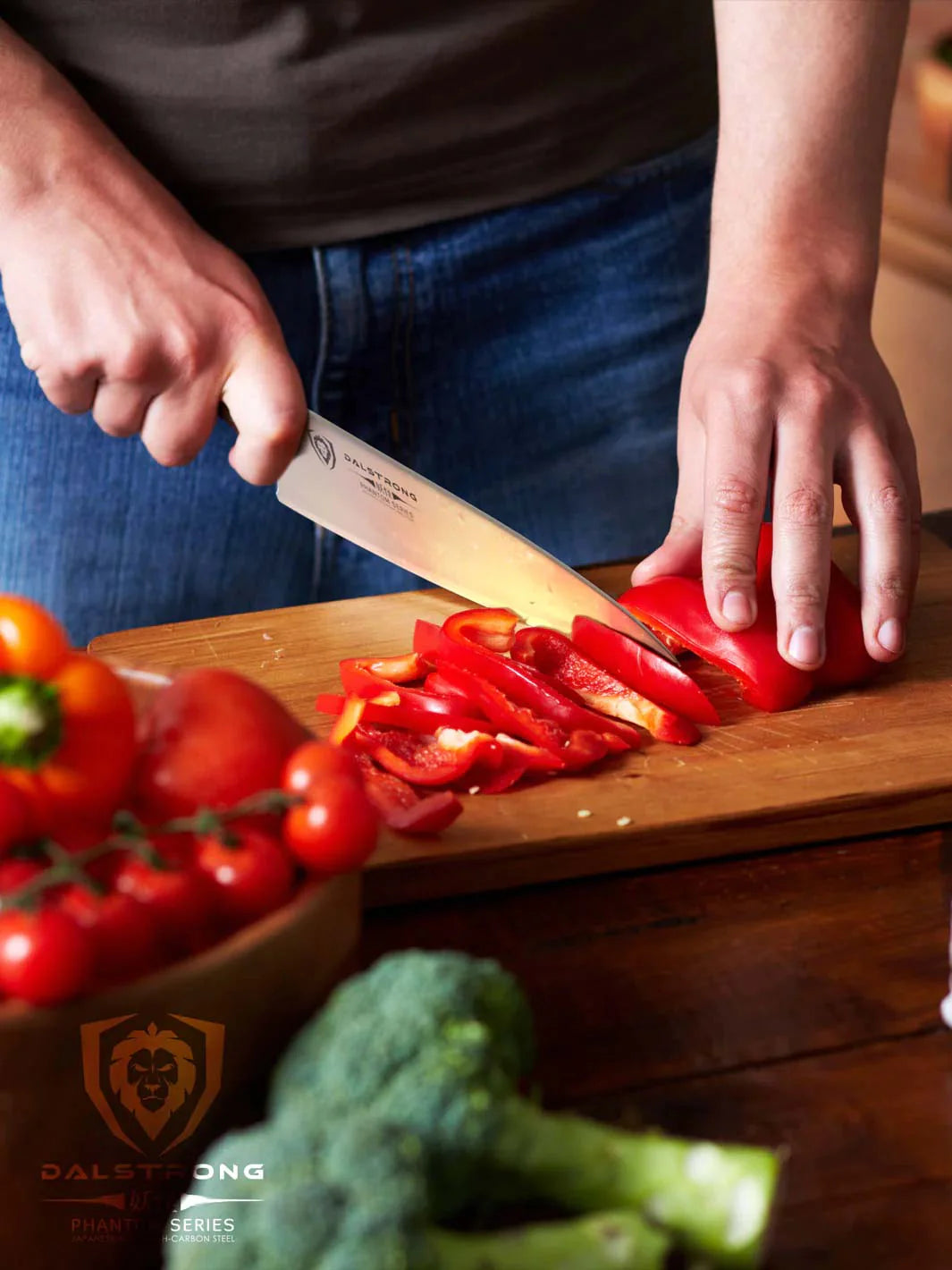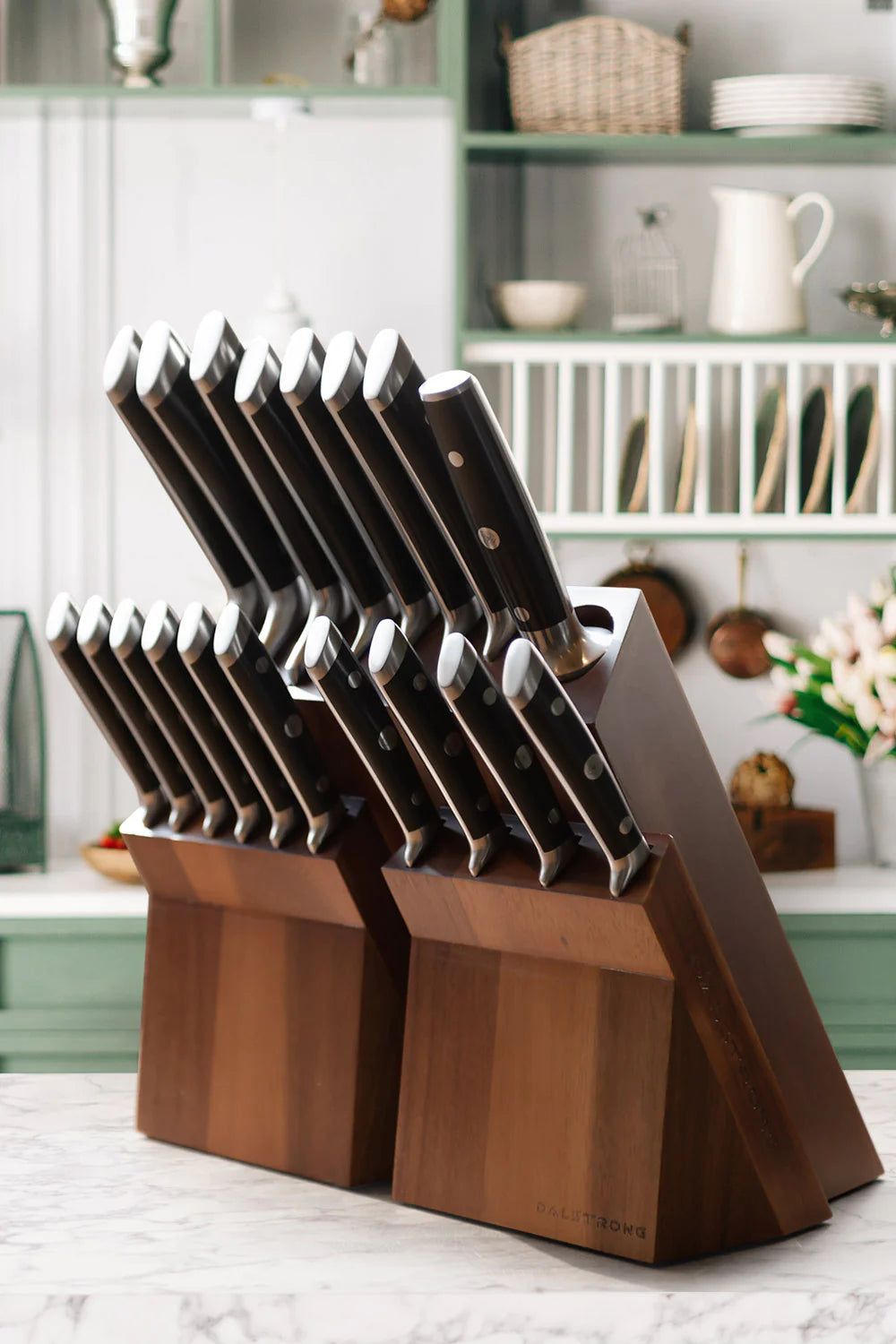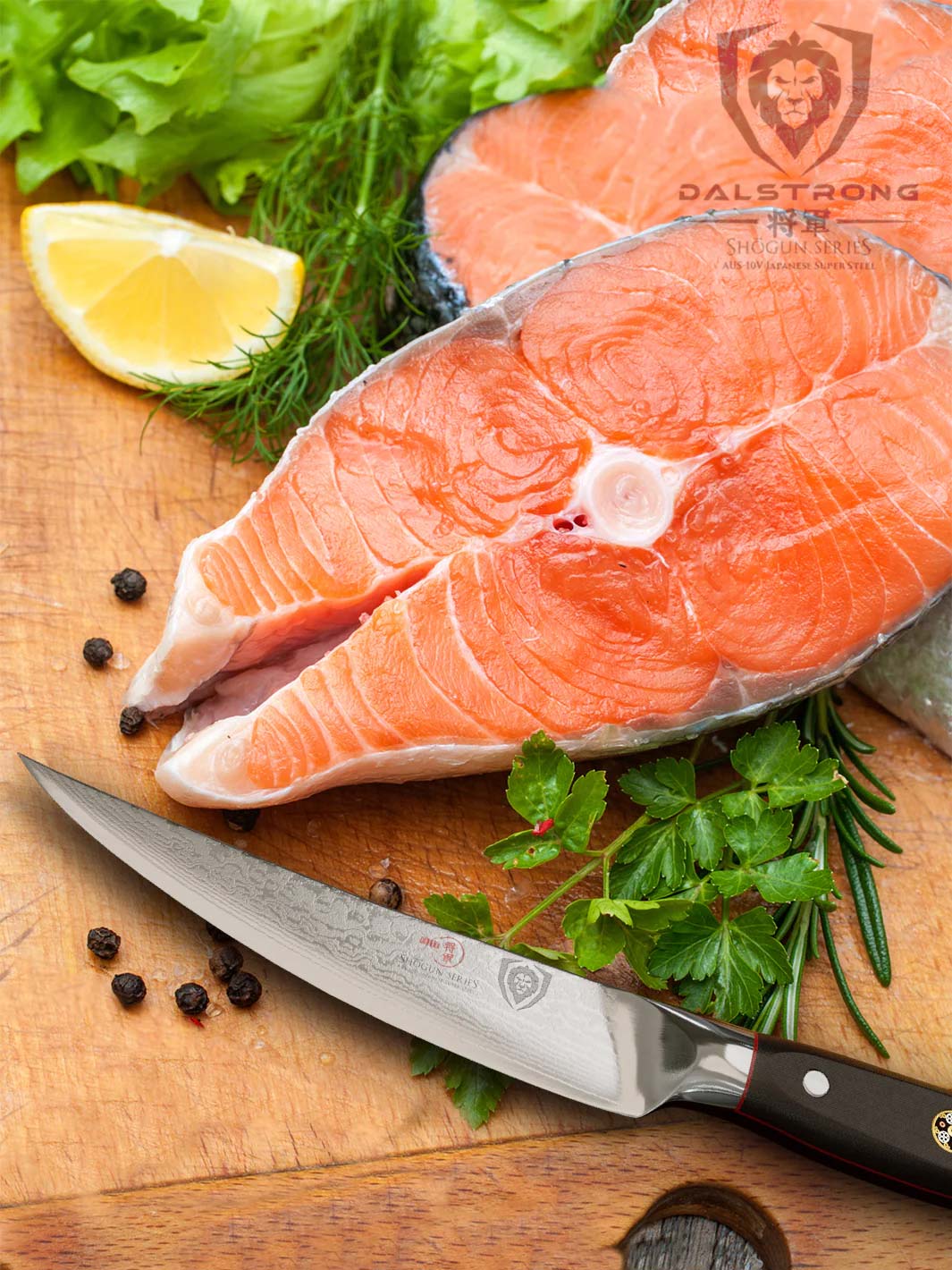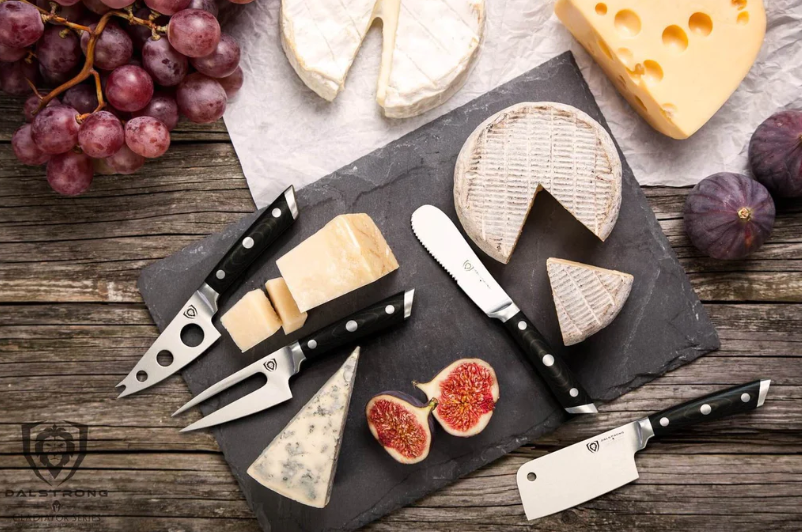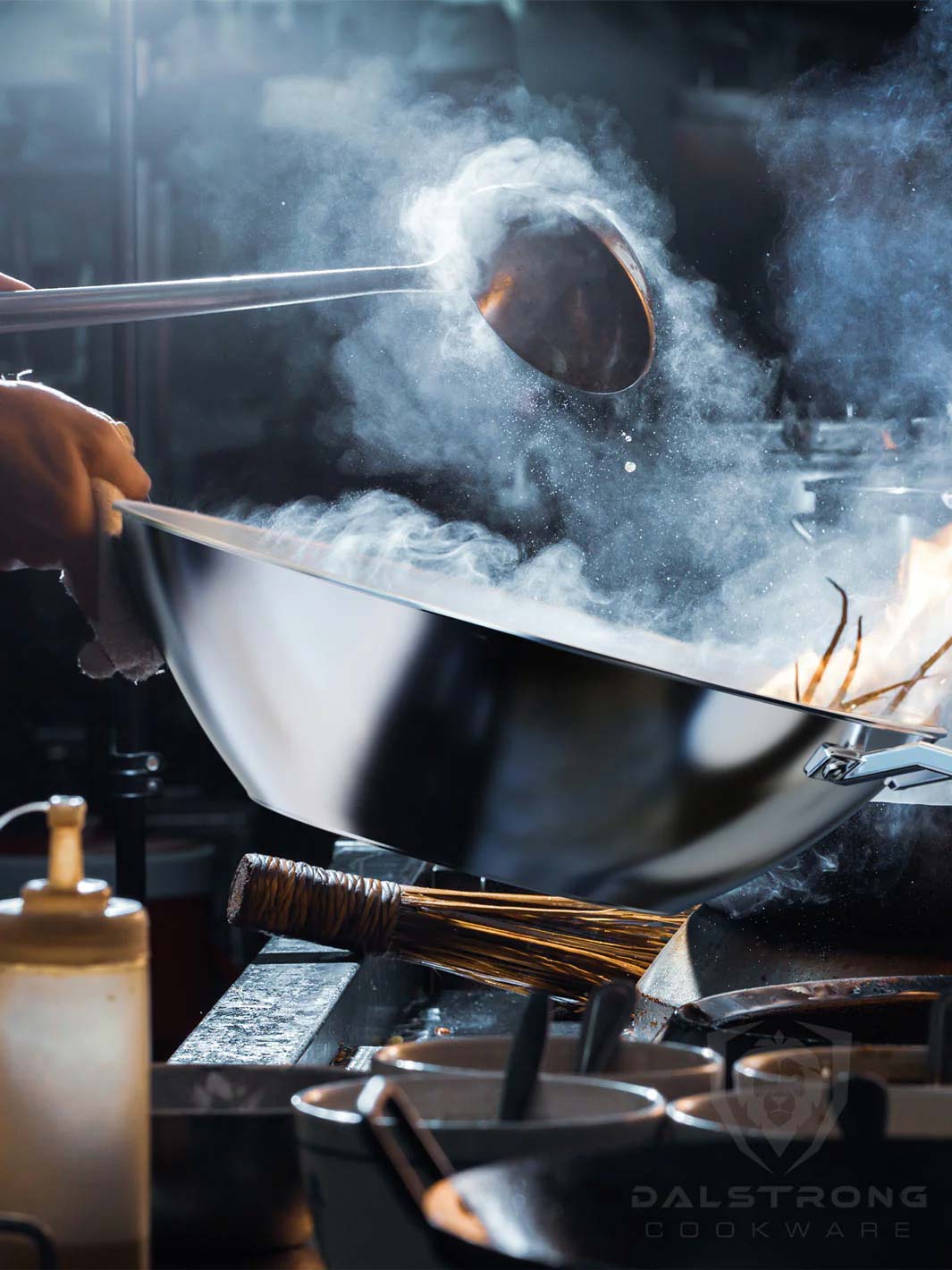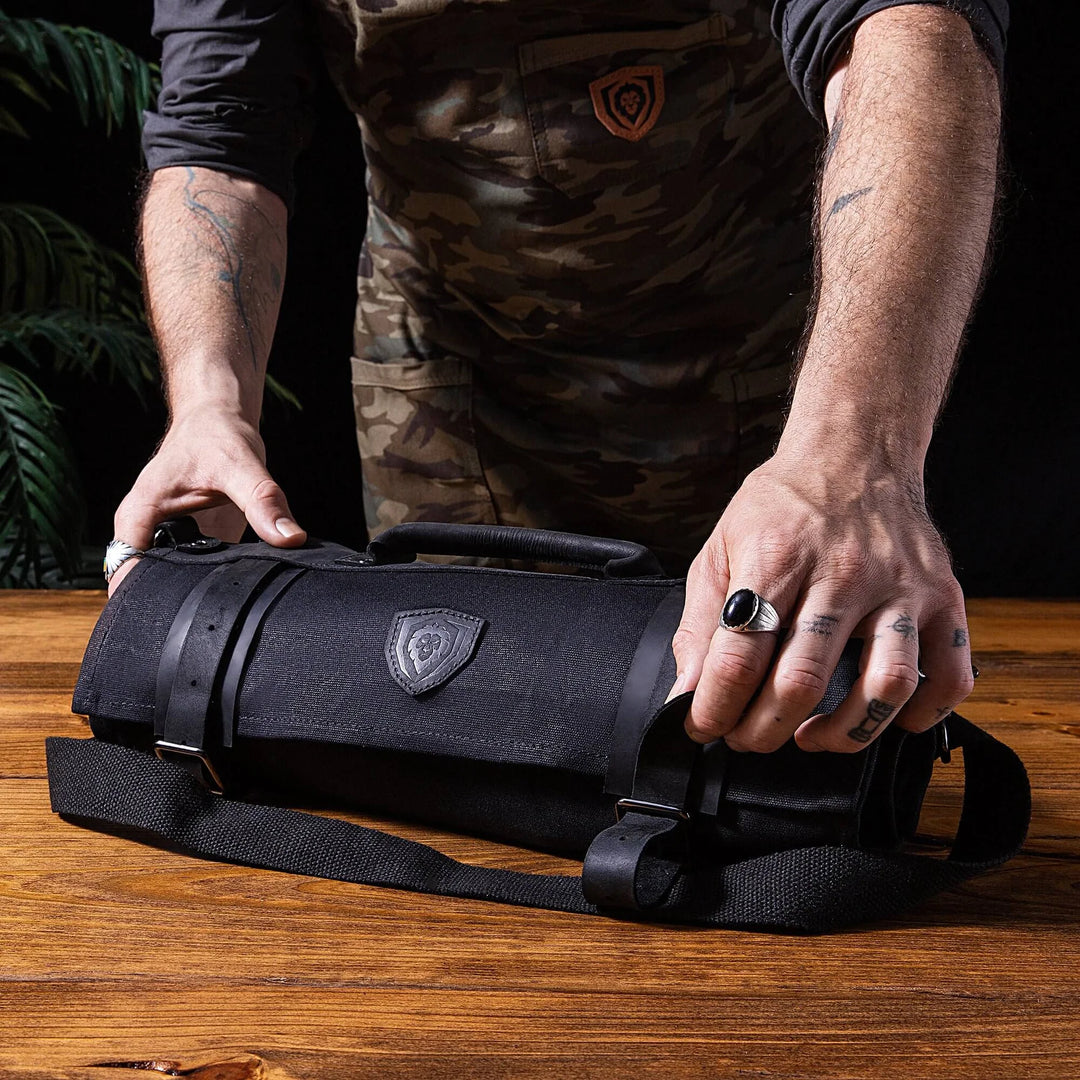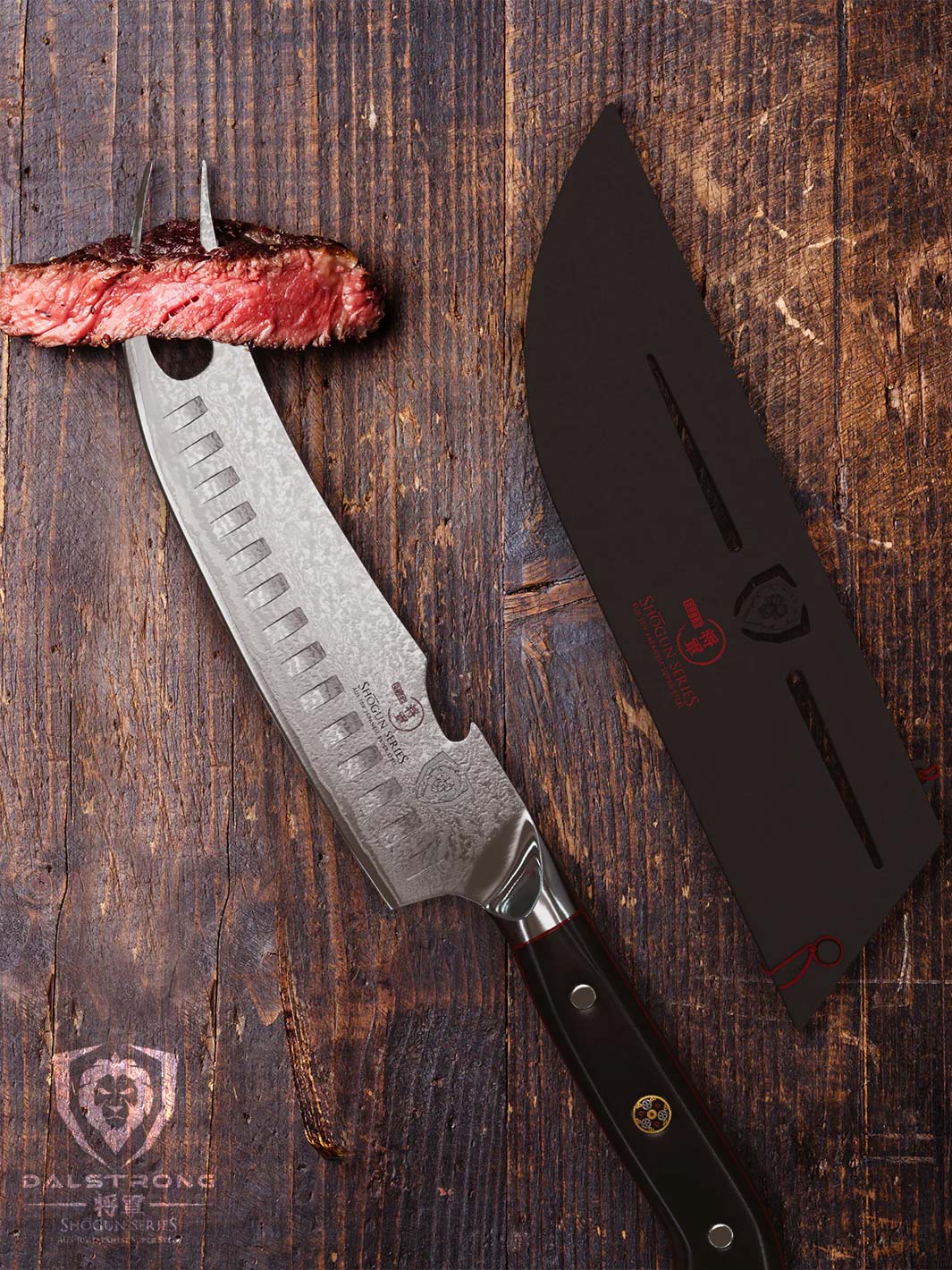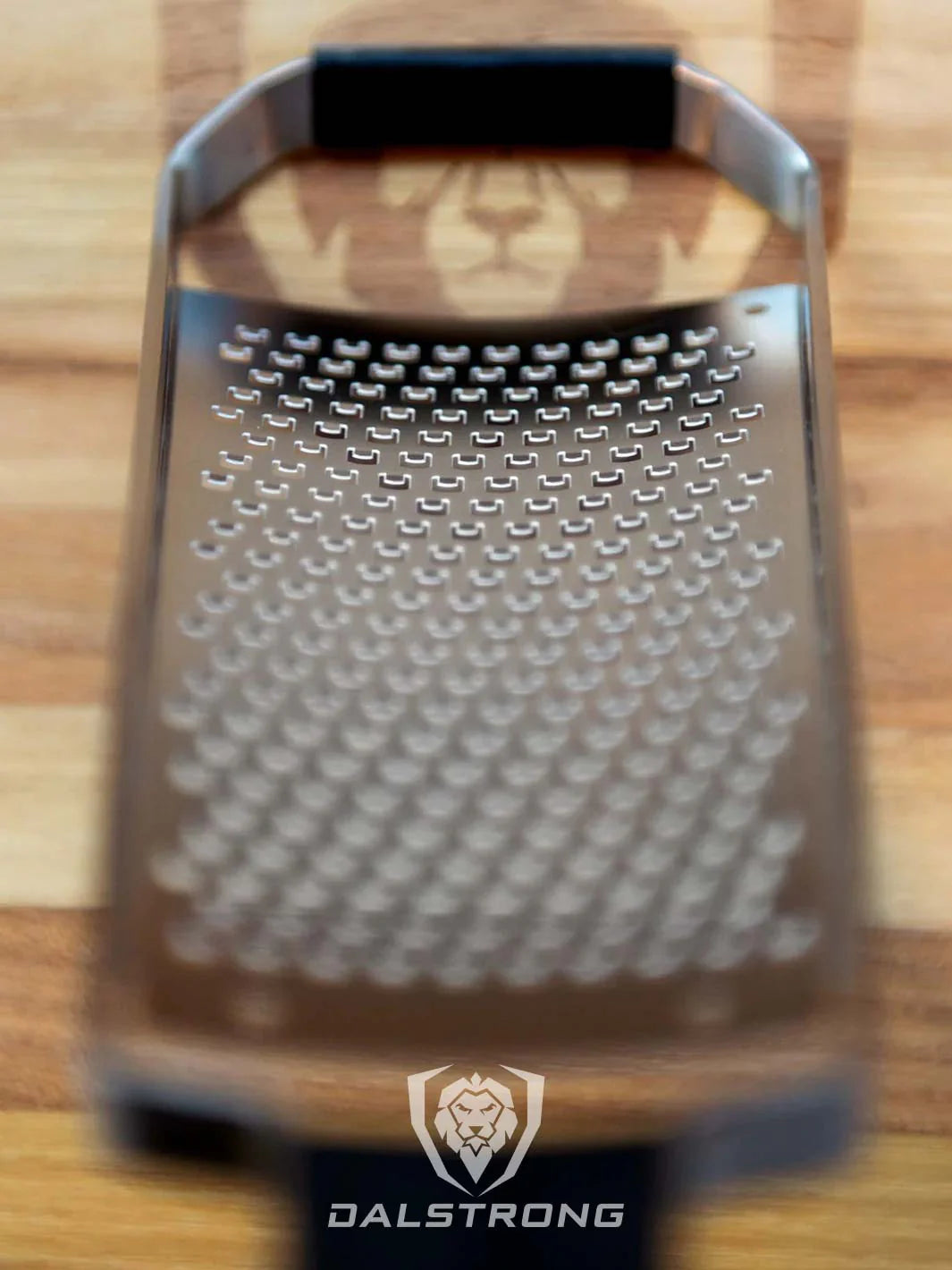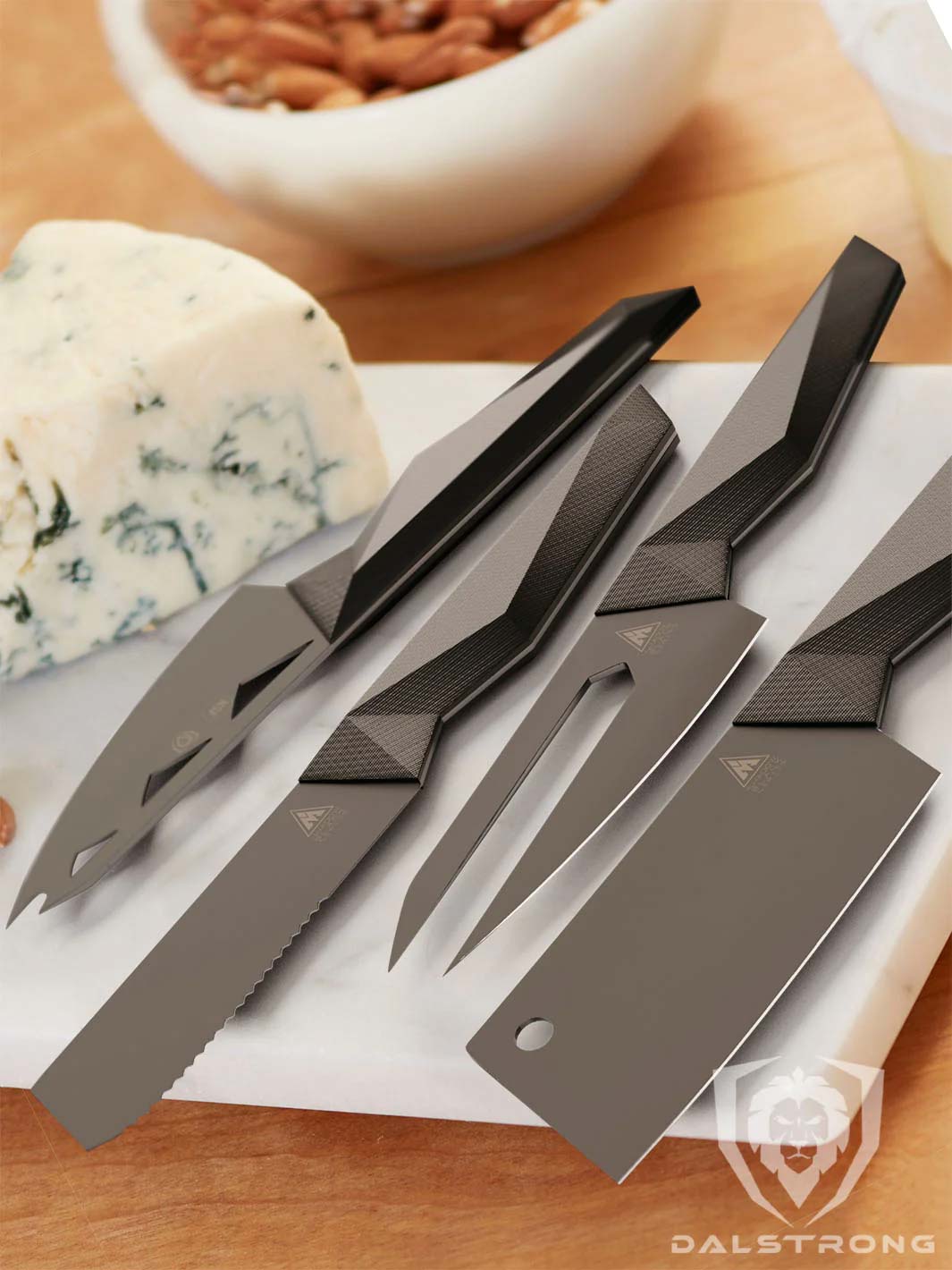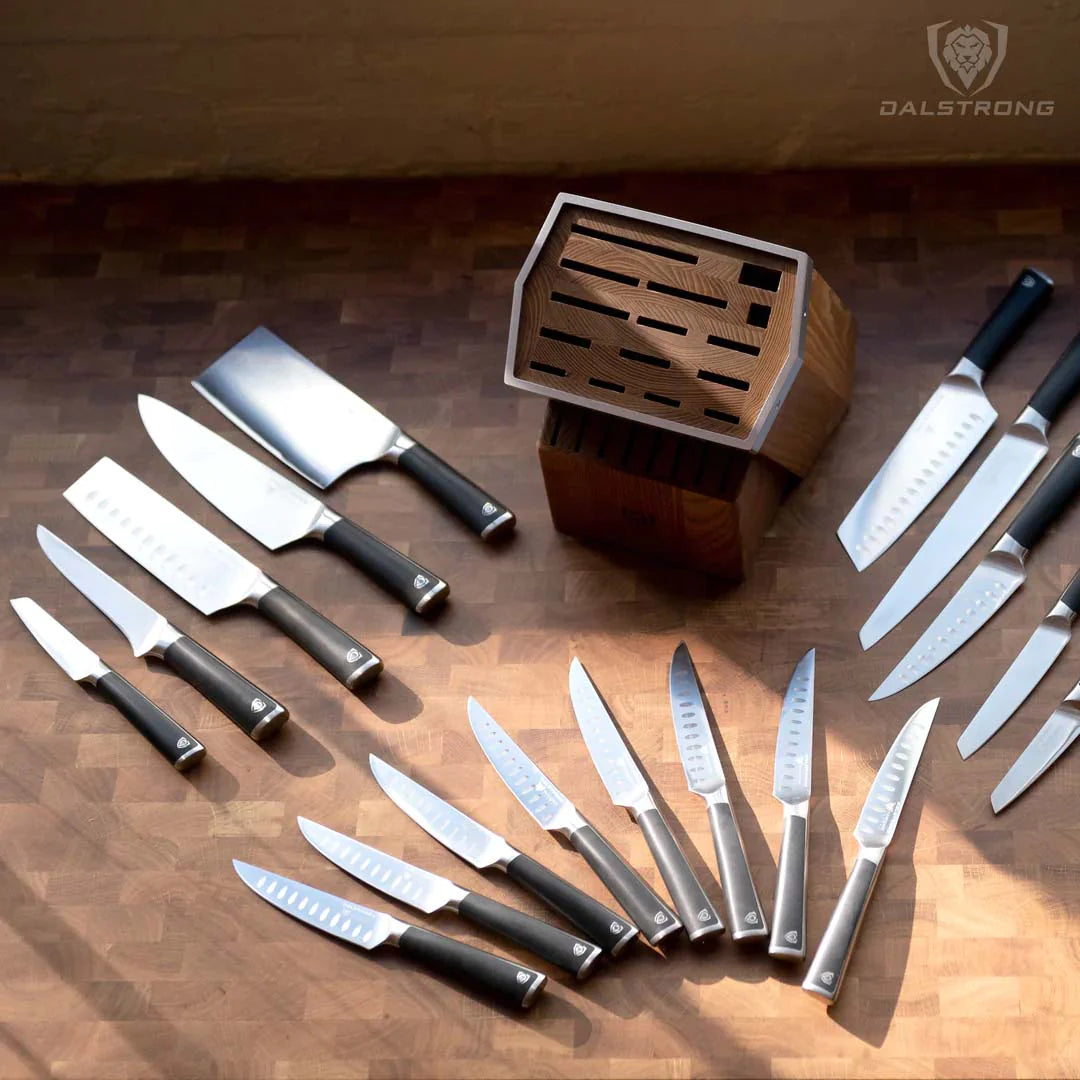How To Do A Knife Sharpness Test
 Ceramic Coating Honing Rod 10"
Ceramic Coating Honing Rod 10"
So you think your knife is sharp? Let's put it to the test. Whether you're slicing tomatoes or crafting a chiffonade, ensuring your blade is as sharp as you think is essential. Let’s slice into how you can test and maintain that sharp knife.
1. Why Test Your Knife's Sharpness?
 Shadow Black Series Honing Steel 9"
Shadow Black Series Honing Steel 9"
Have you ever wondered why some chefs are so obsessed with keeping their knives razor-sharp? It’s not just for show – testing the sharpness of your knife is key to ensuring your kitchen adventures are both successful and safe. Let's chat about why you should keep your blade in tip-top shape before it becomes a dull knife.
First off, a sharp knife is a reliable knife. When you’ve got a blade that effortlessly makes clean cuts, you’re not just speeding up your prep time; you're making each cut more precise. This precision isn't just about looking good on the plate; but about cooking evenly. Whether you're slicing vegetables or meat, uniform pieces cook at the same rate, giving you better results in the taste department.
When does a knife need sharpening?
A knife needs sharpening when it starts to struggle with basic tasks. Ever tried slicing a tomato with a dull blade? It’s a squishy, frustrating mess. That’s your first clue that it’s time to sharpen up. Using a dull knife can actually be dangerous – it requires more force to cut through foods, which increases the chance of the knife slipping and causing an injury. Seriously, nothing kills the cooking vibe like a trip to the emergency room.
So, why test your knife's sharpness? To keep your cooking safe, efficient, and enjoyable. It's a simple check that pays off in big ways. After all, every chef – pro or home cook – relies on their knives to be the unsung heroes of the kitchen. Make sure yours is always ready to perform, and you’ll not only save time and effort but also keep your fingers intact.
Read about how to clean a knife, here.
2. The Definition Of Sharp
 Premium Whetstone Kit #1000 / #6000 Grit with Nagura Stone & Rust Erase
Premium Whetstone Kit #1000 / #6000 Grit with Nagura Stone & Rust Erase
When we talk about a sharp knife, we're not just throwing around kitchen jargon. There's a real science behind what makes a knife sharp, and why that "wicked edge" is something of a culinary treasure. Let's dive into what it means for a knife to be truly sharp, and what’s actually happening on a tiny scale along your knife’s edge.
Imagine your knife's edge as a microscopic mountain range. When it's newly sharpened, this mountain range has peaks that come to very fine, precise points. These points are what we refer to when we talk about a knife having a cutting edge. It’s this ultra-fine point that allows the knife to slice cleanly through food with minimal effort. Under a visual inspection, a sharp blade should look smooth and uniform without any visible nicks or dents along the edge – a flawless line that catches the light.
So how do knives get dull?
With regular use, those fine points on the blade begin to wear down and fold over. This is what dulling is all about. The peaks get rounded, and the valleys between them get filled in, making the edge blunter. It’s a bit like a mountain eroding over time. The result? You need to apply more pressure to make cuts, which isn’t just inefficient – it’s unsafe.
So, what exactly happens when you sharpen a knife? You're essentially reshaping those microscopic peaks and valleys, restoring them to their original, razor-like state. That's what gives a knife that wicked edge – the kind that makes slicing through a ripe tomato feel as effortless as cutting through air. The edge sharpness is visible too. A well-sharpened knife will have a gleaming edge under light, and any imperfections can often be spotted during a thorough visual inspection.
Understanding the dynamics of a sharp vs. a dull knife helps you appreciate why keeping that edge in prime condition is key to kitchen performance. Plus, it's pretty cool to think about all that micro-architecture at play every time you chop, slice, or dice.
3. Elements That Influence The Sharpness Of Knives
 Portable Whetstone Kit #1000 / #6000 Grit Combo with Oak Storage Box
Portable Whetstone Kit #1000 / #6000 Grit Combo with Oak Storage Box
Not all knives are created equal. The material of the knife’s blade plays a huge role. High-carbon steel, for instance, is renowned for its ability to hold a sharp edge longer. It's tough, resistant to wear, and tends to be the go-to choice for many professional chefs. On the other hand, stainless steel is more resistant to rust and corrosion but might need a touch-up on the sharpening stone more frequently.
Then there are more exotic materials like ceramic, which can maintain an edge for ages without sharpening but are prone to chipping if you’re not careful. The point is, the composition of your knife not only dictates how well it will cut but also how it should be maintained.
How much (and how) you use your knives also comes into play
Regular use on hard surfaces, like cutting on ceramic or glass boards, can dull a blade faster than you can say "chop." Even the foods you frequent can make a difference. Cutting through bone, frozen foods, or very fibrous vegetables can be tough on edges. For a long-lasting sharpness, wooden or plastic cutting boards are your best bets – they’re kinder to the blades.
Sharpening is essential
Each type of knife has its ideal angle for sharpening; get this wrong, and you might either not sharpen it effectively or wear down the blade prematurely. Plus, using the wrong tools for sharpening can lead to uneven edges or excess material being stripped away, which is definitely not what you want.
A good rule of thumb is to hone regularly but sharpen sparingly. Honing can realign the edge without removing much, if any, material, keeping your knife ready for action without wearing it down. As for sharpening, it’s all about precision. Ensure you’re using the right technique, whether it’s a whetstone, an electric sharpener, or sending it out to a professional who knows their way around a blade.
4. Procedures To Test How Sharp A Knife Is
 Frost Fire Series Honing Rod 10"
Frost Fire Series Honing Rod 10"
Let’s get to testing knife sharpness:
Paper Test
Hold a single sheet of printer paper by one end. Position your knife at the top of the sheet and draw the blade down through the paper. A sharp knife should make a smooth, effortless cut paper without tearing or snagging. This test is great for detecting any nicks or unevenness along the knife’s blade.
Tomato Test
Grab a ripe tomato and try slicing it using your knife sharpened edge. A truly sharp blade will slice through the tomato with minimal pressure; it should feel like the knife is doing the work for you. If the tomato squishes or requires force, your knife may need a touch-up on a sharpening stone.
Hair Test
This can be a revealing test but requires caution. Gently shave hair on your arm or leg. A sharp blade will shaves the hair cleanly in one pass without pulling or discomfort. This is a practical demonstration of a knife will cut through even fine materials.
Arm Hair Test
Similar to the hair test, this specifically involves the hairs on your arm. Lightly sweep your knife across a small patch of arm hair. A knife in prime condition will easily shave hair without causing any irritation or scraping against the skin, demonstrating edge sharpness. Be very, very cautious when you do this!
These tests are simple yet effective ways to assess the sharpness of your knife. Remember, each test not only checks if the knife can perform but also highlights the importance of maintaining such sharpness through regular honing and proper storage. Don't forget to use a honing rod or sharpening steels periodically to align the blades edge, ensuring peak performance.
5. Dalstrong Tools To Sharpen Your Knives
1. Premium Whetstone Kit #1000 #6000 Grit with Nagura Stone
This sharpening kit is packed with everything you need to keep your knives cutting smoothly and safely, like they’re brand new. You get two whetstones: one with #1000 grit for working out the rough spots and another with #6000 grit to give your blades that glossy, mirror-like finish. Made from top-grade corundum, these stones don’t mess around. They’ll sort your blades out quick and keep them sharp.
PROS:
- Dual grit stones mean you can handle any level of dullness and get your knives back to primo condition.
- Top-quality corundum makes these stones durable and efficient at sharpening.
- The Acacia wood base looks great and keeps everything secure while you work.
- Extras like the Nagura stone and rust eraser make maintaining your kit and knives a breeze.
CONS:
- It might be a bit much if you're not too serious about your knife game.
- It’s a bit of an upfront investment, but think of it as buying peace of mind for your fingers and your dinner prep!
2. Ceramic Coating | Honing Rod 10"
This awesome honing rod is coated with a scratch-free, black ceramic that promises not to mess up your high-end blades. Plus, it comes with a tough G10 handle that feels solid and comfortable in your hand, whether you’re a seasoned chef or just getting the hang of things in the kitchen.
PROS:
- Perfect size for most kitchen knives, easy to manage without taking up too much space.
- High-quality ceramic coating is tough on dullness but gentle on your blades, making it ideal for expensive, high-hardness knives.
- The ergonomic, triple-riveted G10 handle offers a secure grip and withstands extremes of heat and cold.
- Comes with a non-slip, silicone-covered tip for safe, stable use, even for beginners.
CONS:
- The ceramic coating might require some handling to avoid chipping.
- This tool alone won't keep your knives sharp! Remember, it is for honing!
3. Shadow Black Series | Honing Steel 9"
Unlike the previous ceramic-coated rod, this one is all about a more traditional approach with a twist. It's crafted from high-carbon steel and finished with chrome plating, offering superb durability and resistance to wear and corrosion. The surface is designed with fine grooves that expertly realign your knife's edge, quickly restoring its razor-sharpness.
PROS:
- Made from high-carbon steel, enhanced with chrome plating for extra toughness and corrosion resistance.
- Fine grooves on the steel’s surface expertly realign and sharpen knife edges efficiently.
- Stylish, black chrome finish makes this honing steel a sleek addition to your kitchen toolkit.
- Durable construction ensures it’s a long-lasting tool for professional and home kitchens alike.
CONS:
- The traditional steel has a pretty understated look; some might prefer the all-black look.
- Some might prefer a longer rod for handling larger knives, given this one is just 9 inches.
4. Portable Whetstone Kit #1000 #6000 Grit Combo with Oak Box
This kit is perfect for those who need reliable knife sharpening on-the-go without sacrificing quality. Its elegant design and dual grit capabilities make it a fantastic choice for adventurous chefs who demand the best performance from their blades, no matter where they are.
PROS:
- Double-sided with #1000 and #6000 grit for versatile sharpening and polishing, all in one tool.
- Compact and portable, thanks to the sleek oak storage box, making it ideal for chefs who travel or cook in multiple locations.
- Made from top-grade corundum, ensuring effective sharpening and longevity.
- Comes with a non-slip silicone mat and a detailed sharpening guide.
CONS:
- While portable, it might lack the larger working surface of stationary kits, potentially making extensive sharpening sessions more cumbersome.
- The stylish oak box adds extra bulk compared to more streamlined portable options.
5. Frost Fire Series | Honing Rod 10"
This honing rod from the Frost Fire Series is a great pick if you want something reliable that feels a cut above without draining your bank account. It looks amazing, feels amazing, and it's got the kind of quality that ensures it'll be around for a long time.
PROS:
- Solid construction feels premium without the premium price tag.
- Comfortable and stylish handle that makes the chore of honing a bit more enjoyable.
- More wallet-friendly than many other high-end honing rods, giving you great bang for your buck.
- Nicely packaged, complete with a quirky little Dalstrong pin – perfect for gifting or treating yourself.
CONS:
- The all-white look and honeycomb finish may not be to your liking.
- The bonus pin is a neat touch, but let’s be honest, it’s probably going to end up in a drawer somewhere.
6. How To Maintain Knife Sharpness
So, you’ve got a sharp blade – great! But how do you keep it that way? Maintaining that pristine edge is less about occasional touch-ups and more about regular, mindful care. Let’s talk about the tools and techniques that can help your knives stay in top slicing form.
Sharpening Stone
The sharpening stone is your go-to for fundamental blade upkeep. Think of it as the gym for your knives—a place for a regular workout to keep them fit. Using a stone might take a bit of practice, but it’s incredibly effective. You control the angle and pressure, allowing for a custom sharpen that fits exactly what your knife needs. Stones come in various grits, from coarse for repairing nicks and dull edges to fine for honing that razor-sharp finish.
Honing Rod
Then there's the honing rod. Unlike sharpening, honing doesn’t remove material from the blade. Instead, it straightens the existing edge, correcting any bends or misalignments that occur with regular use. Think of it like brushing your hair to keep it neat between cuts. A few swipes on a honing rod before or after use can make a huge difference in maintaining an edge that feels continuously new.
Electric Sharpeners
For those who prefer a more hands-off approach, electric sharpeners are the ticket. They might not offer the same level of precision as manual methods, but for everyday kitchen use, they’re more than adequate. These gadgets often have built-in guides to help maintain the correct sharpening angles, making them foolproof for quick maintenance.
Sharpening Guides: Precision Tools
And if you’re really into precision, consider using sharpening guides. These tools help you maintain the perfect angle during manual sharpening, ensuring consistent results across the entire edge of the blade. It’s a fantastic aid, especially for beginners, as it takes the guesswork out of the equation.
7. Frequently Asked Questions
Is there a scale for knife sharpness?
Yes, there is a sharpness scale. This scale is part of certified testing protocols used by manufacturers and enthusiasts alike to quantify how sharp a blade really is. The scale is typically based on the amount of force required to cut through a standard medium, such as a specific type of test card or fabric.
How do you measure sharpness?
There are several ways to measure sharpness at home, such as the paper test, where the knife should draw the blade across a printer paper cleanly.
How are knives tested?
Knives undergo a variety of tests to evaluate their sharpness and cutting capabilities. These tests are designed to simulate common cutting tasks and provide a practical assessment of a knife's performance.
How do I know if my knife is 15 or 20 degrees?
Knowing whether your knife is 15 or 20 degrees involves holding the knife at the sharpening angles and observing the knife’s blade as it interacts with a sharpening stone.





































































































































































































